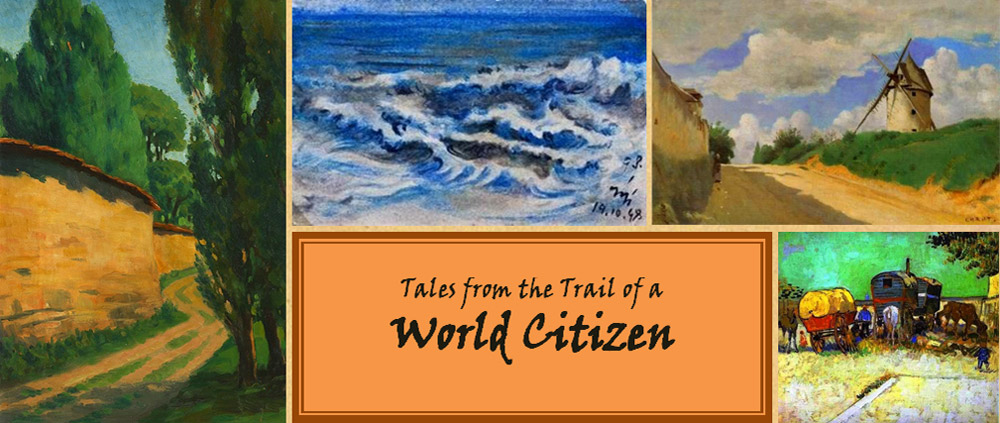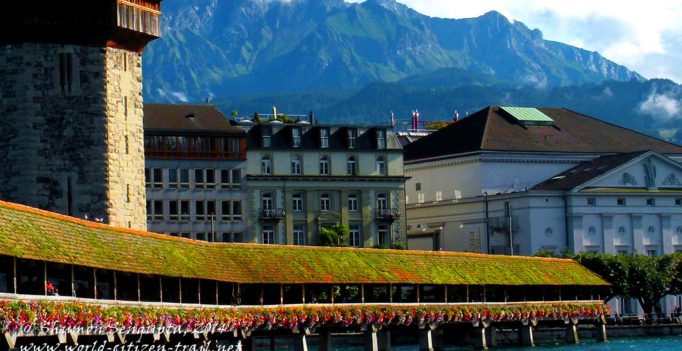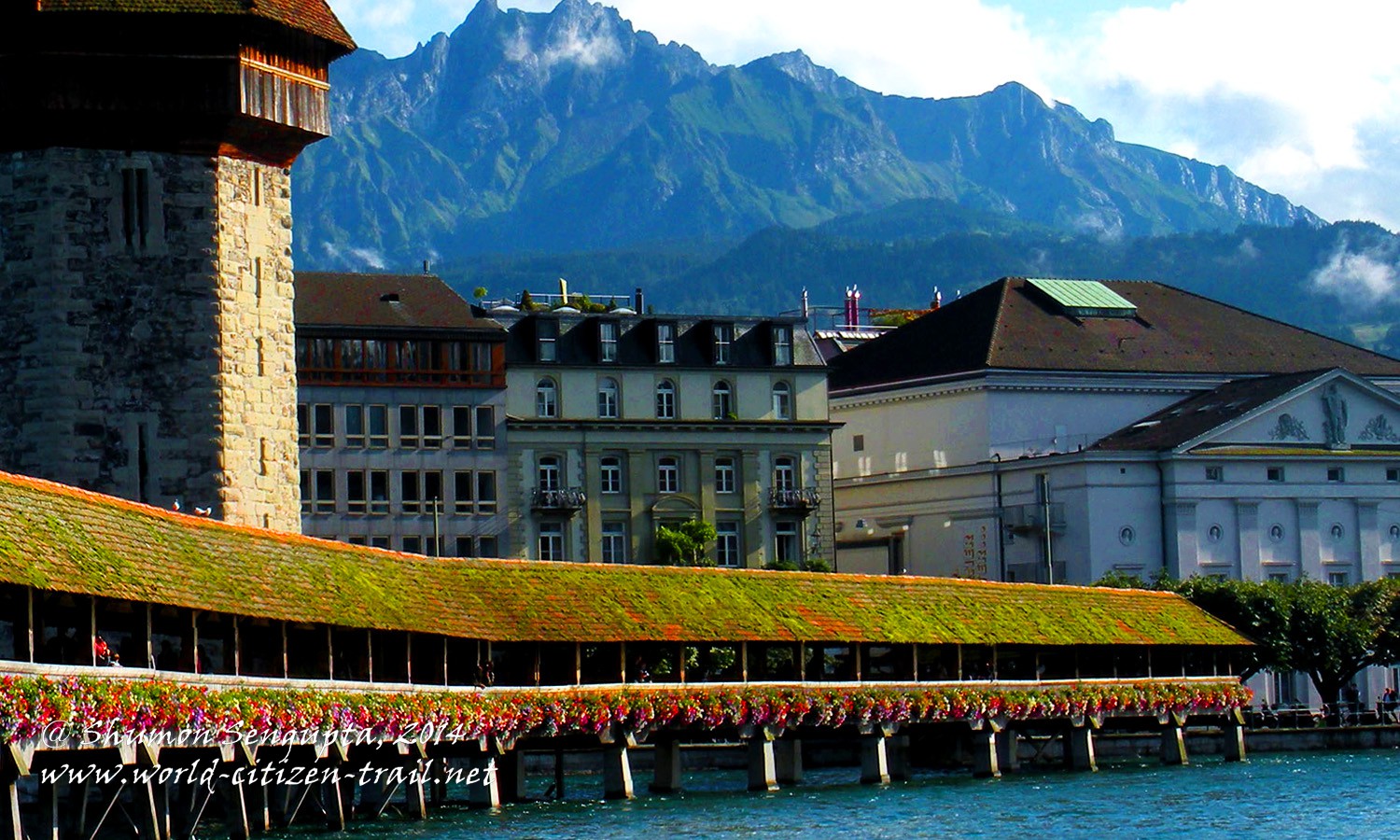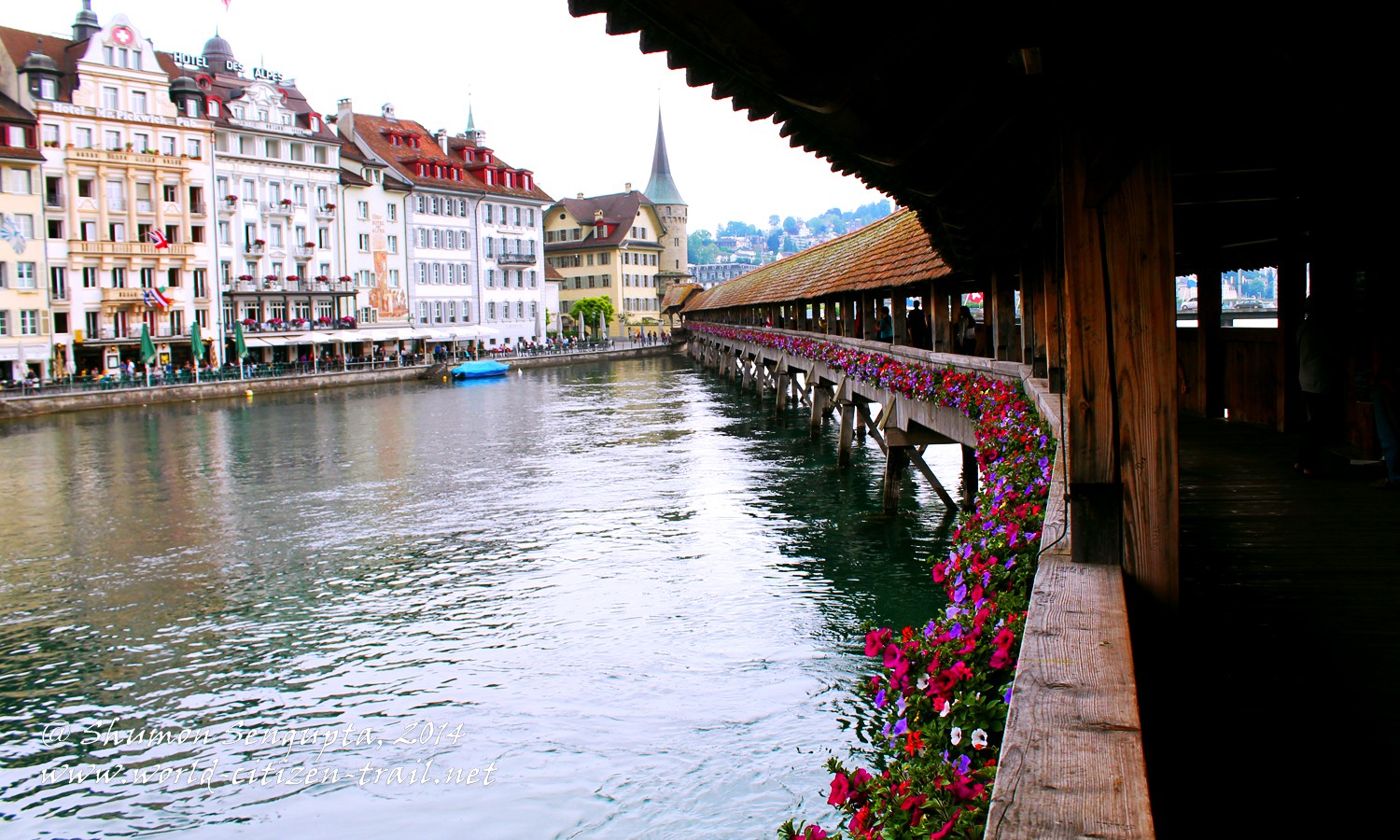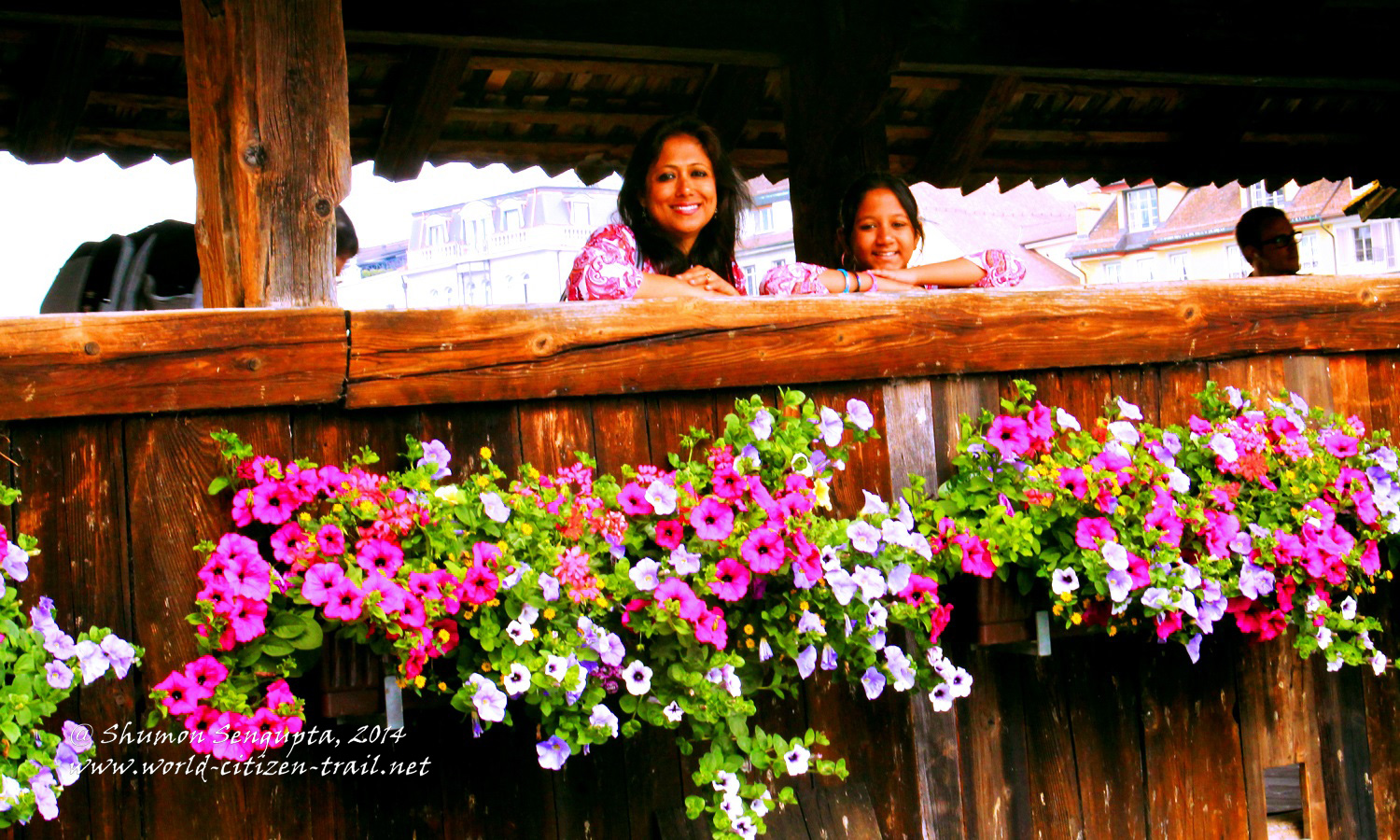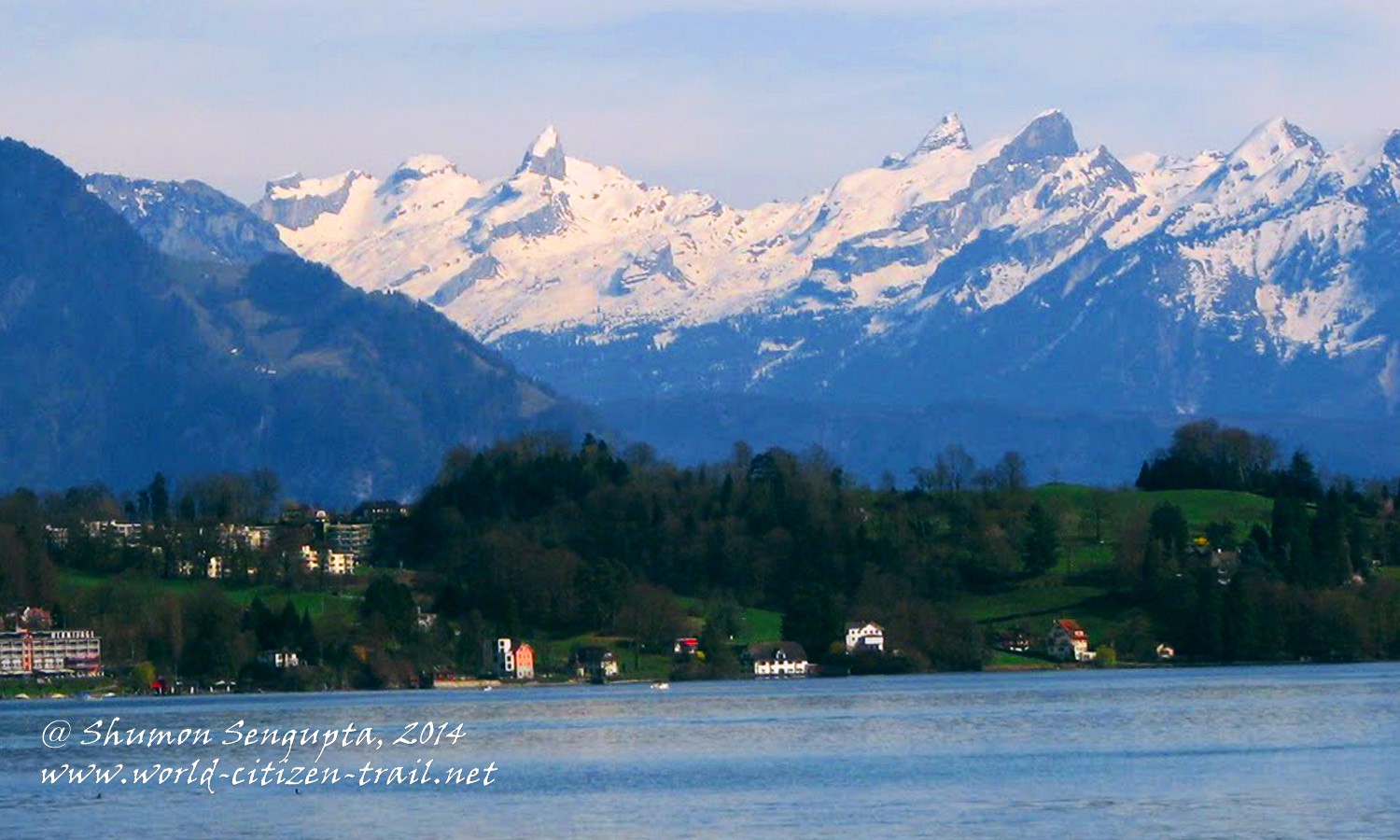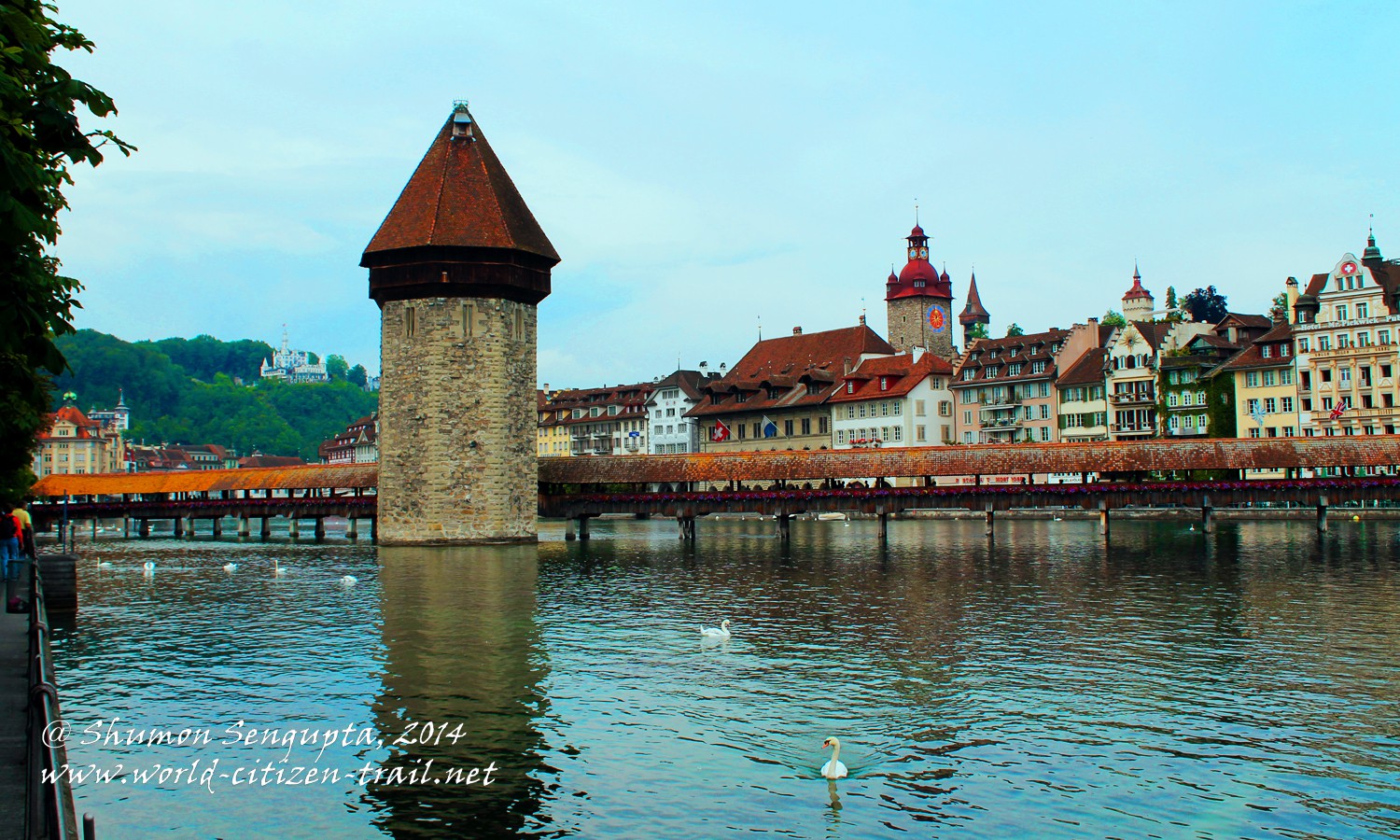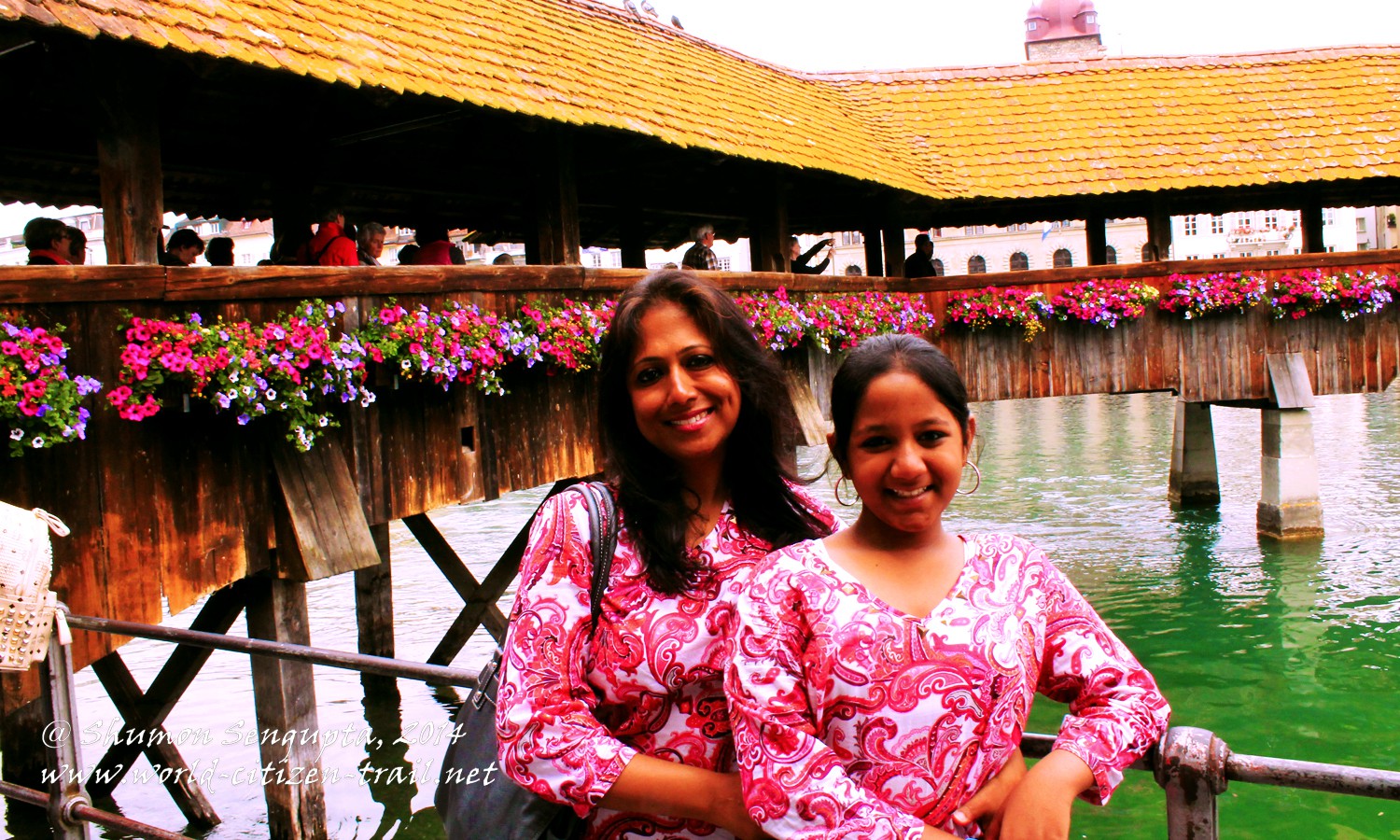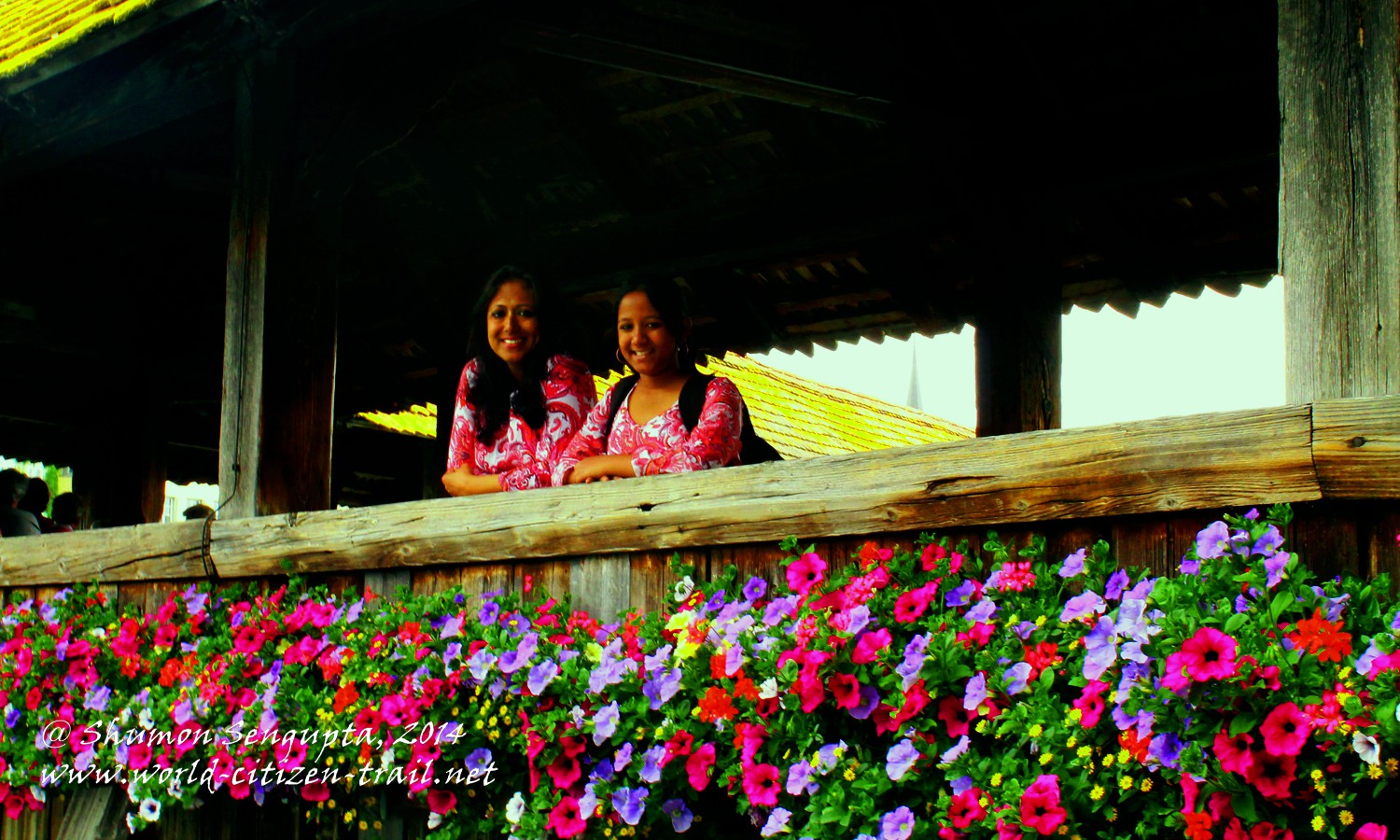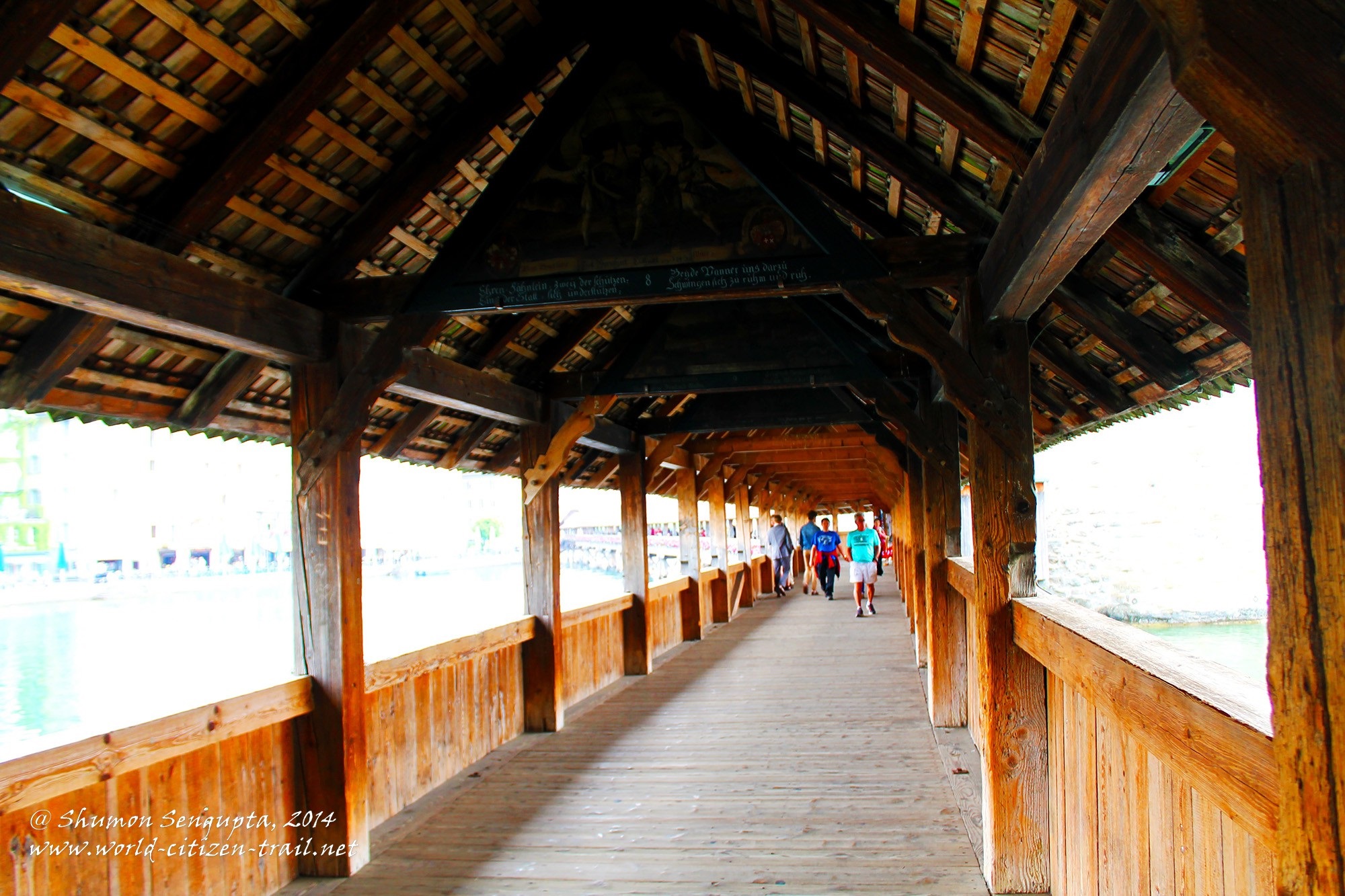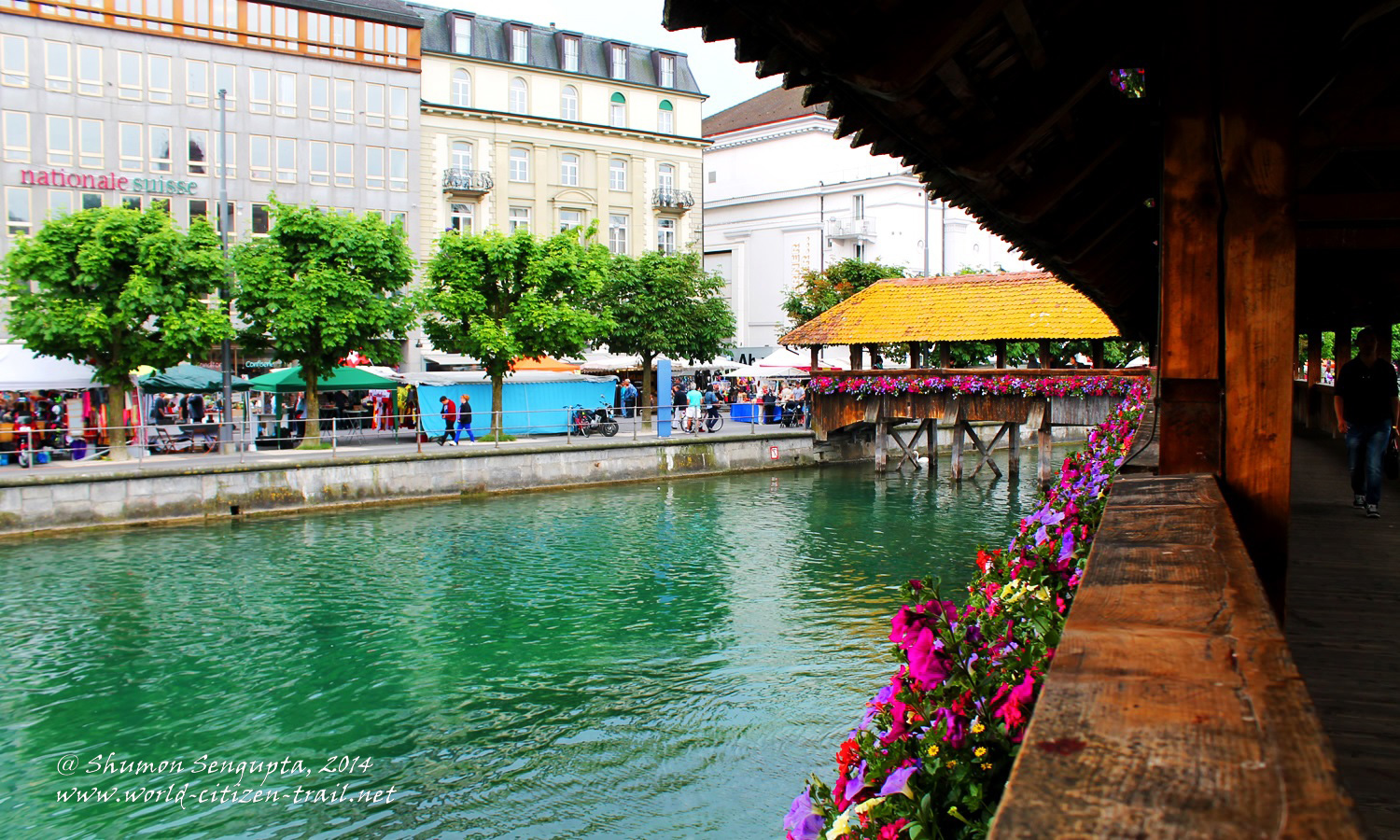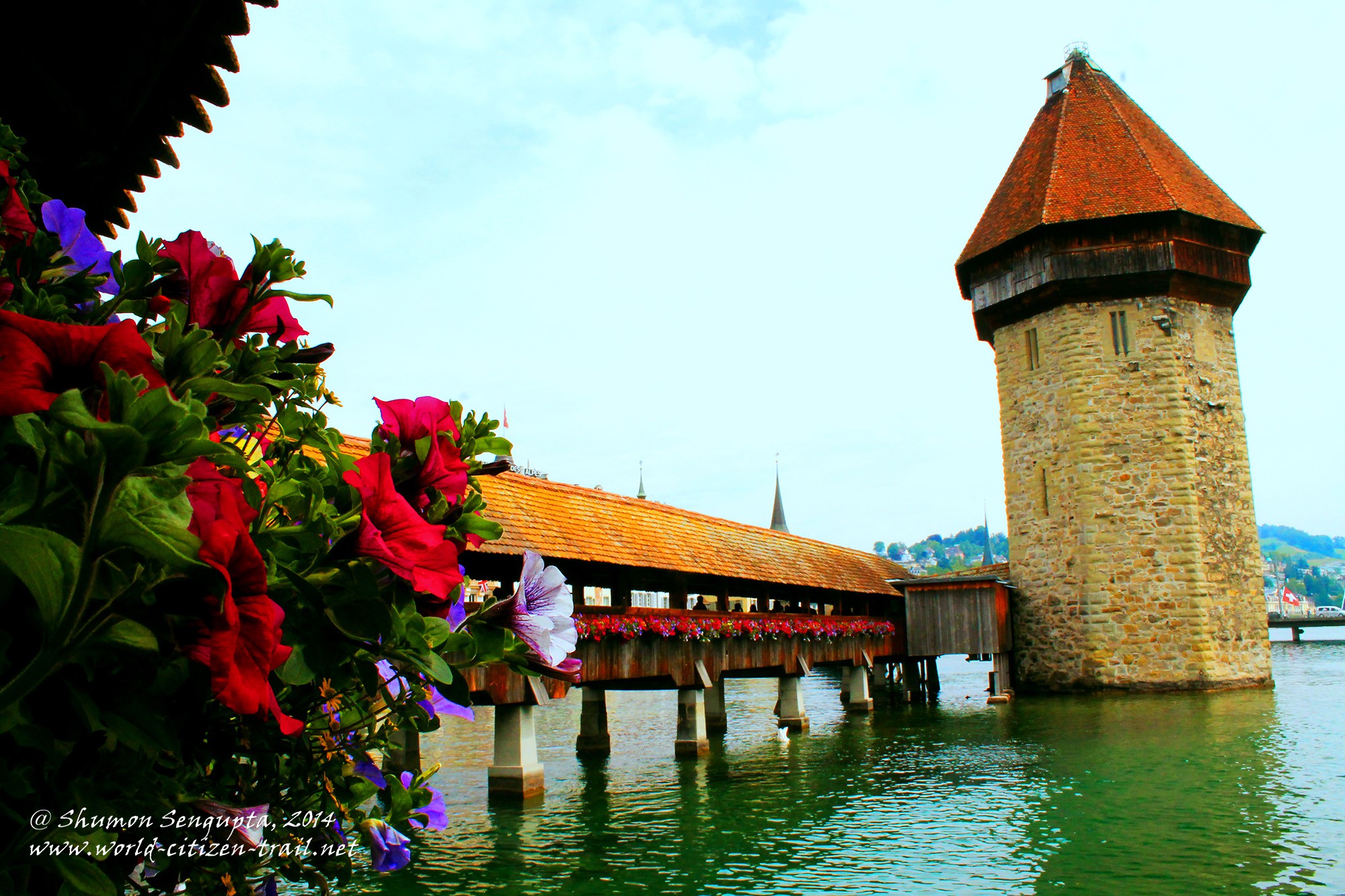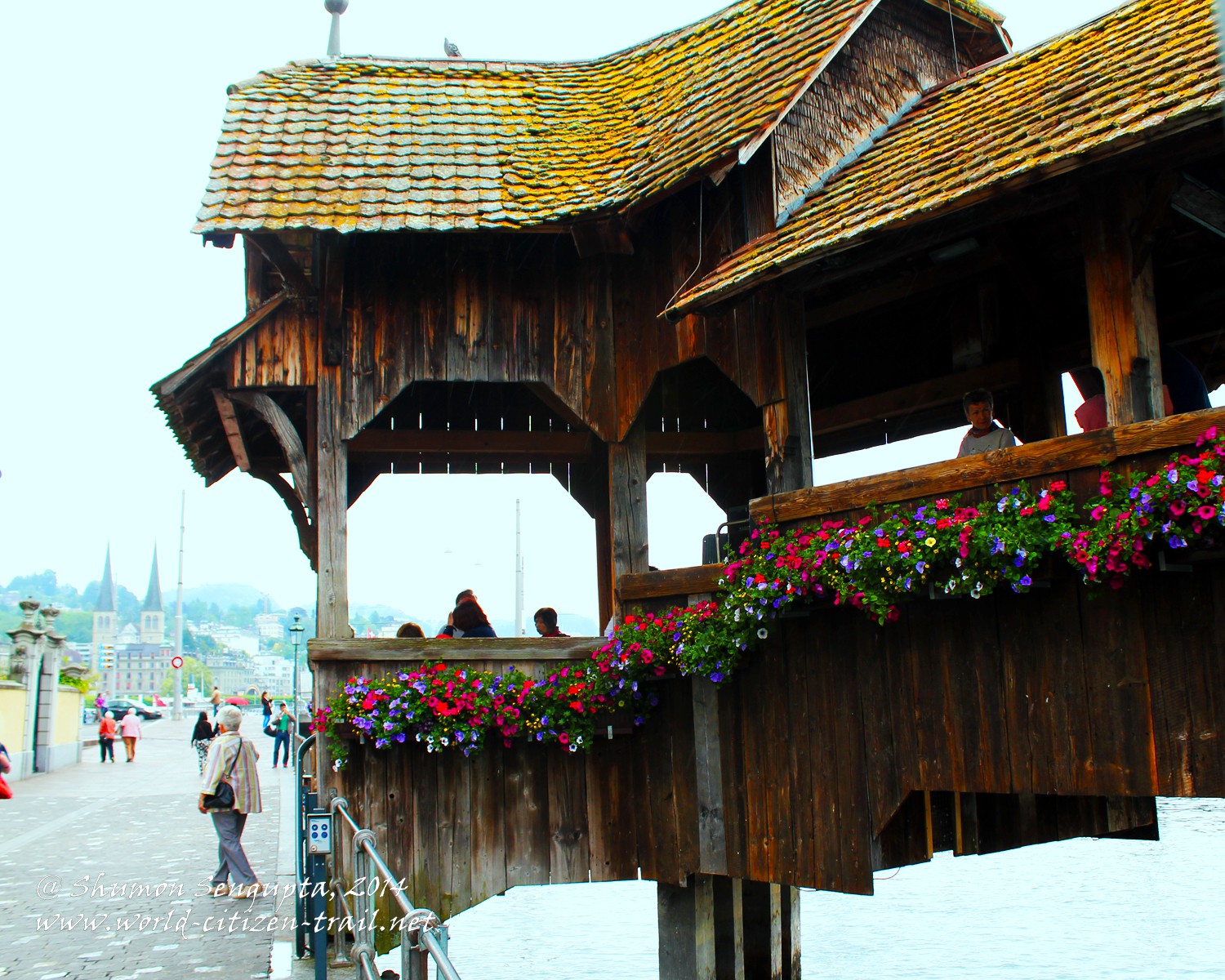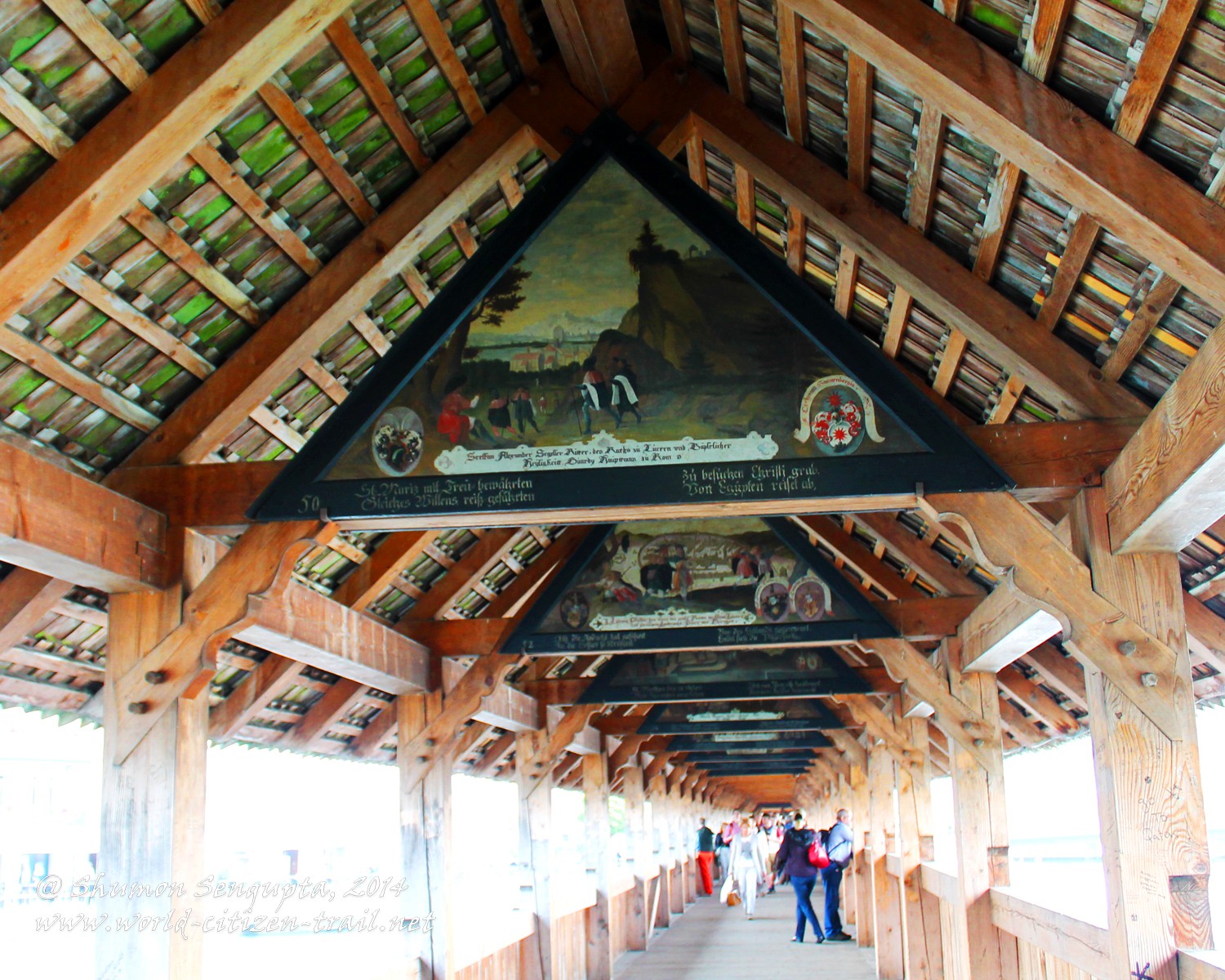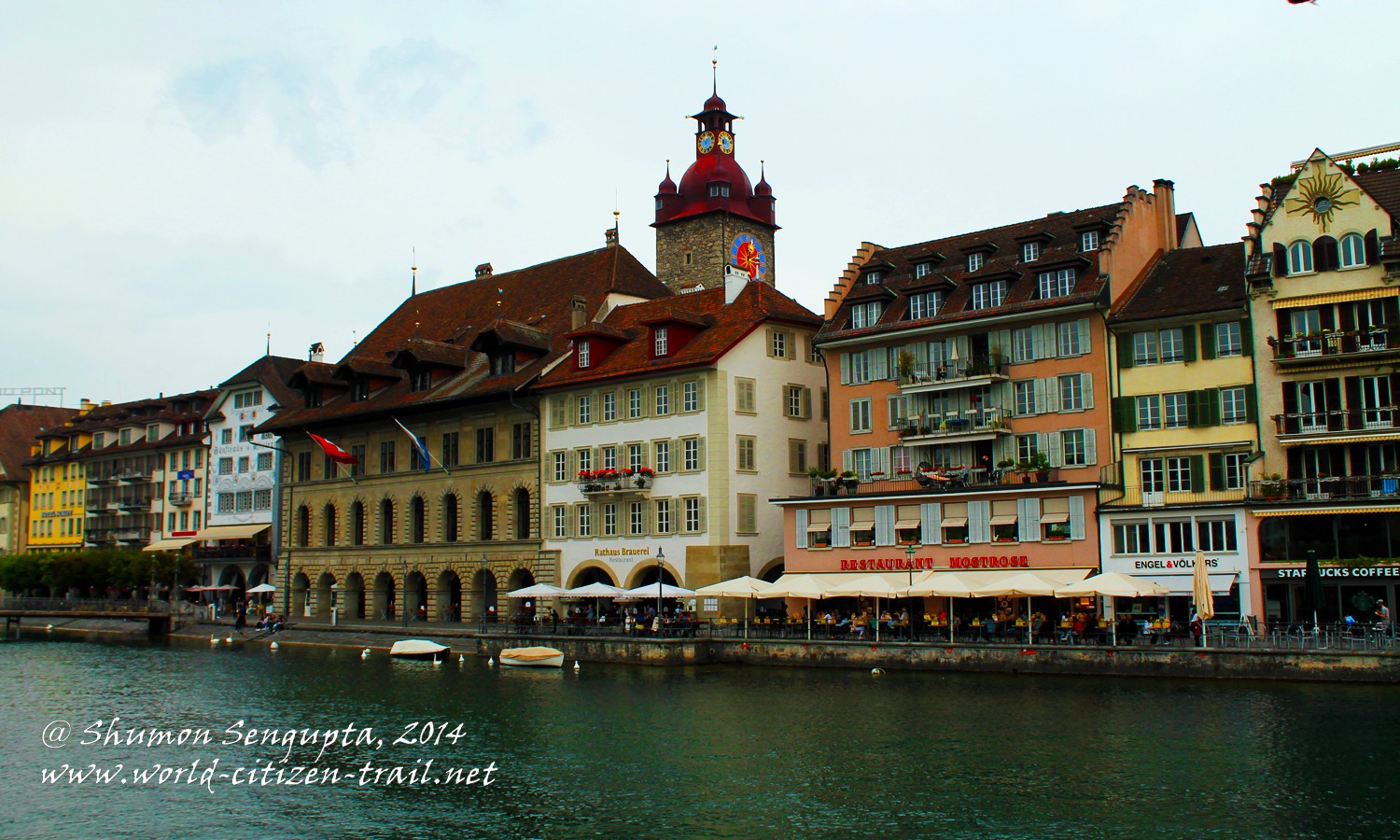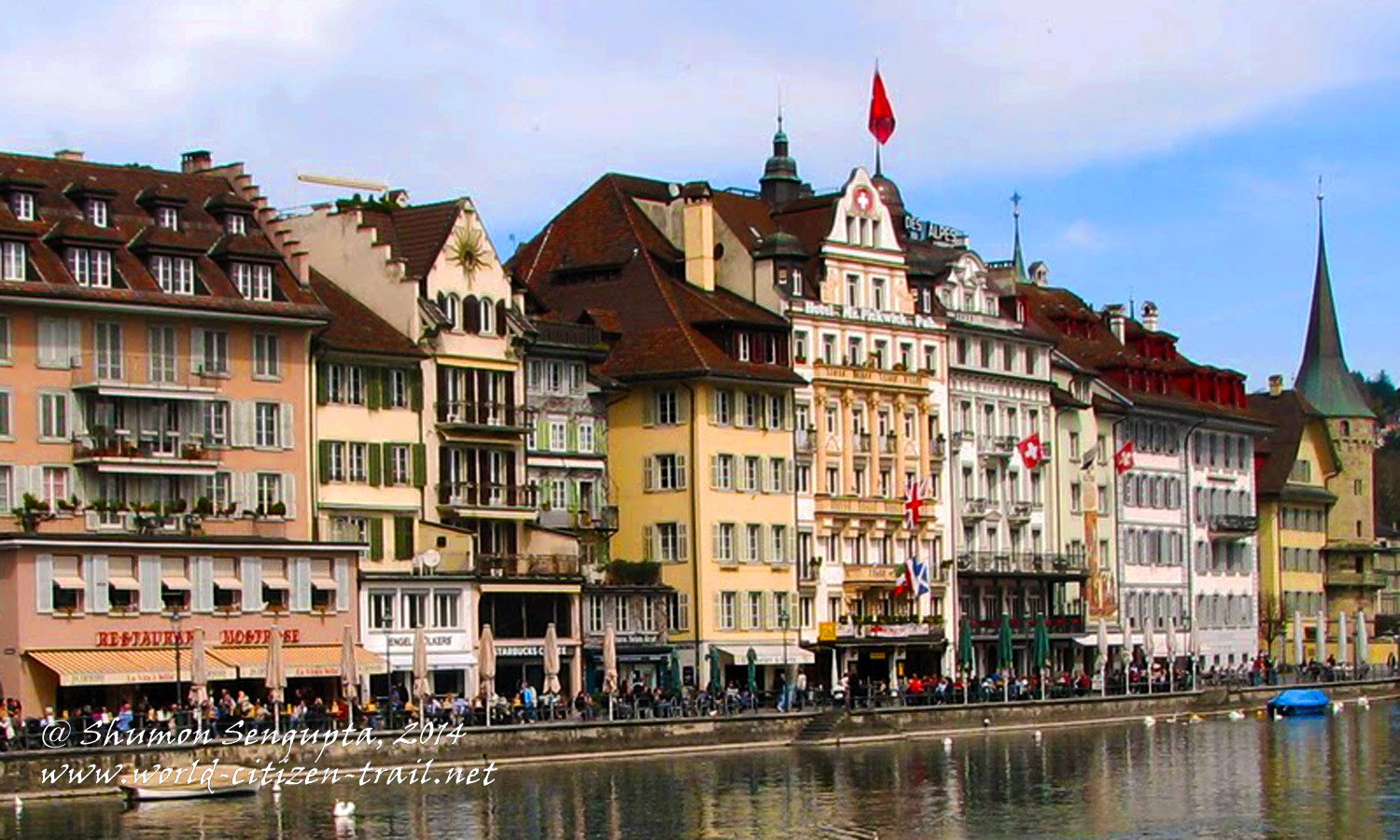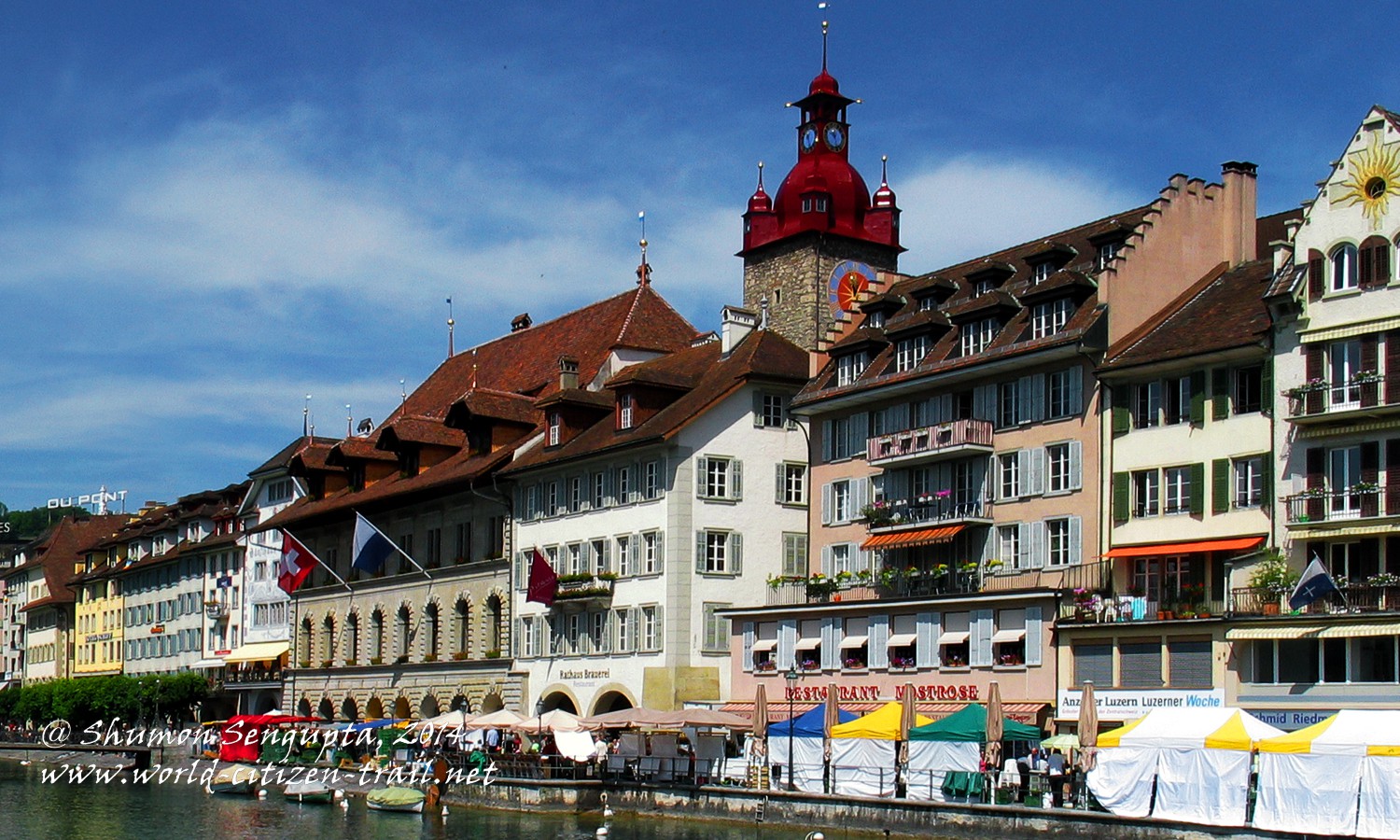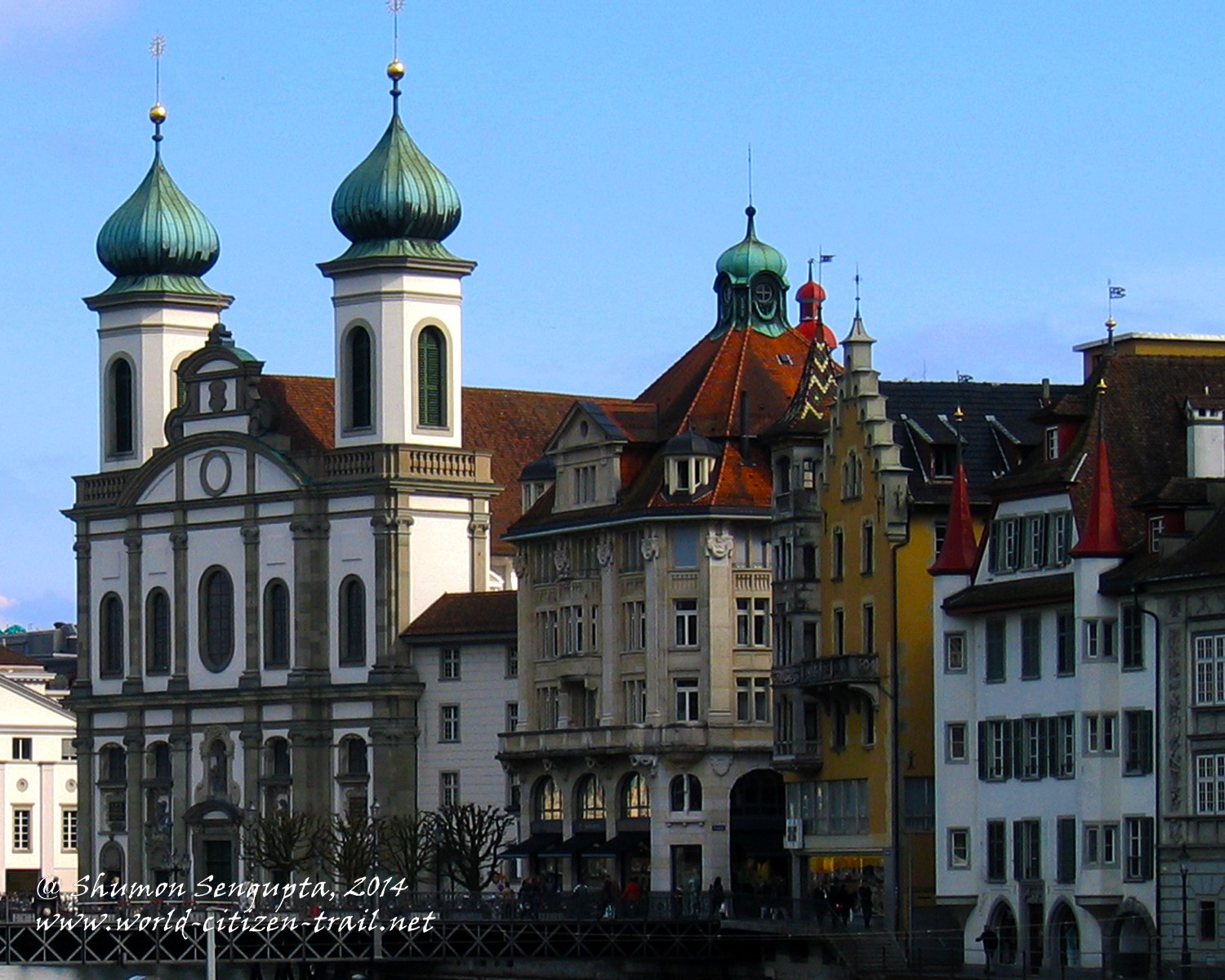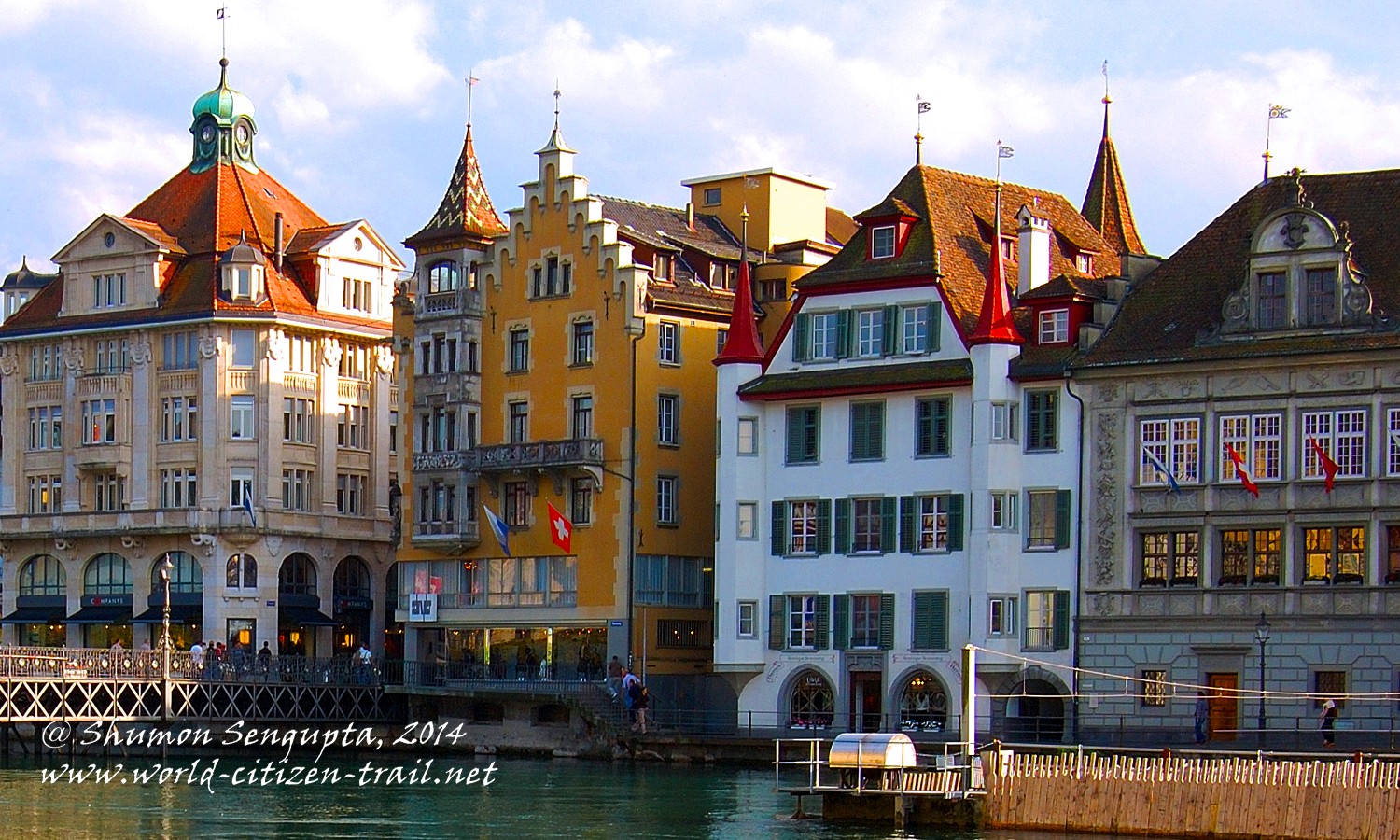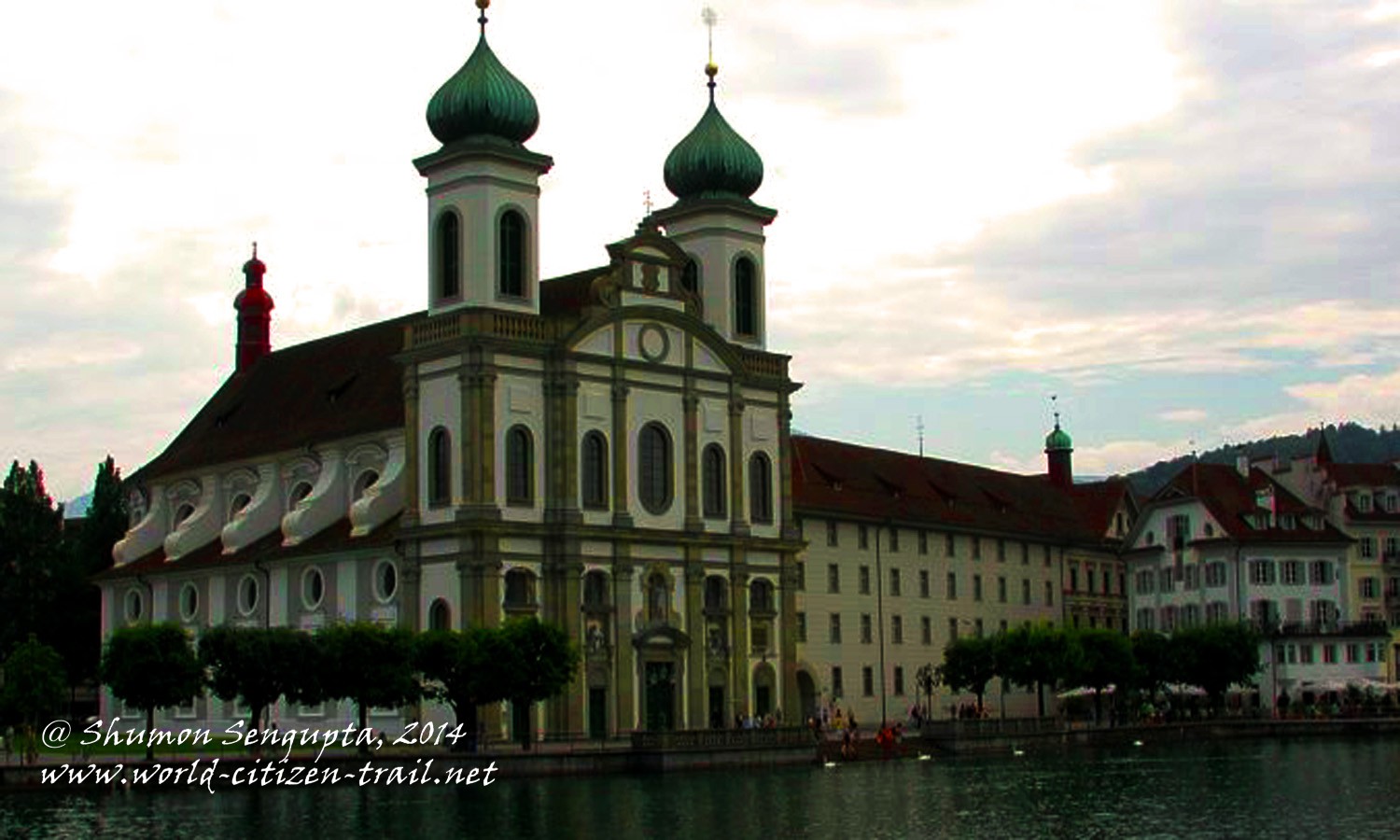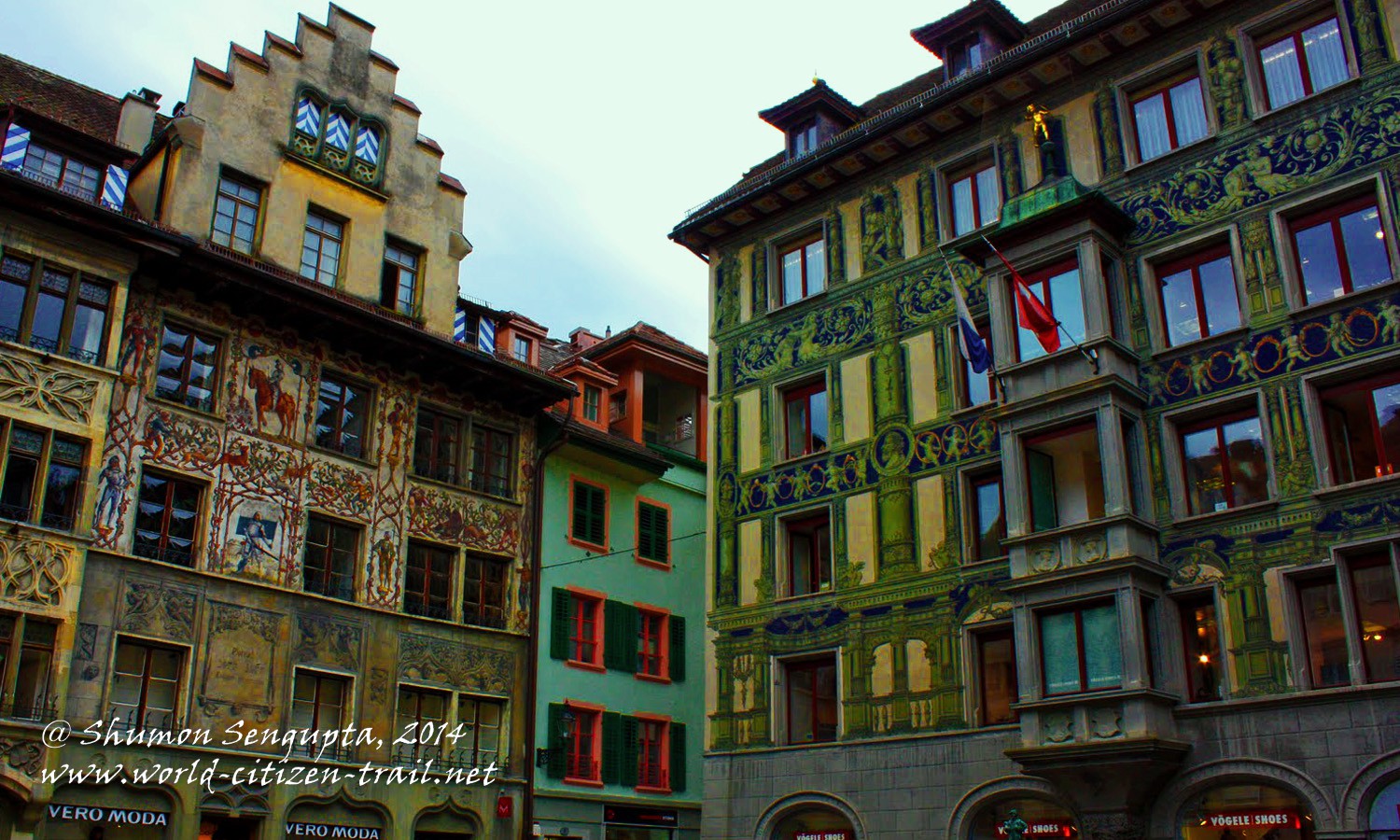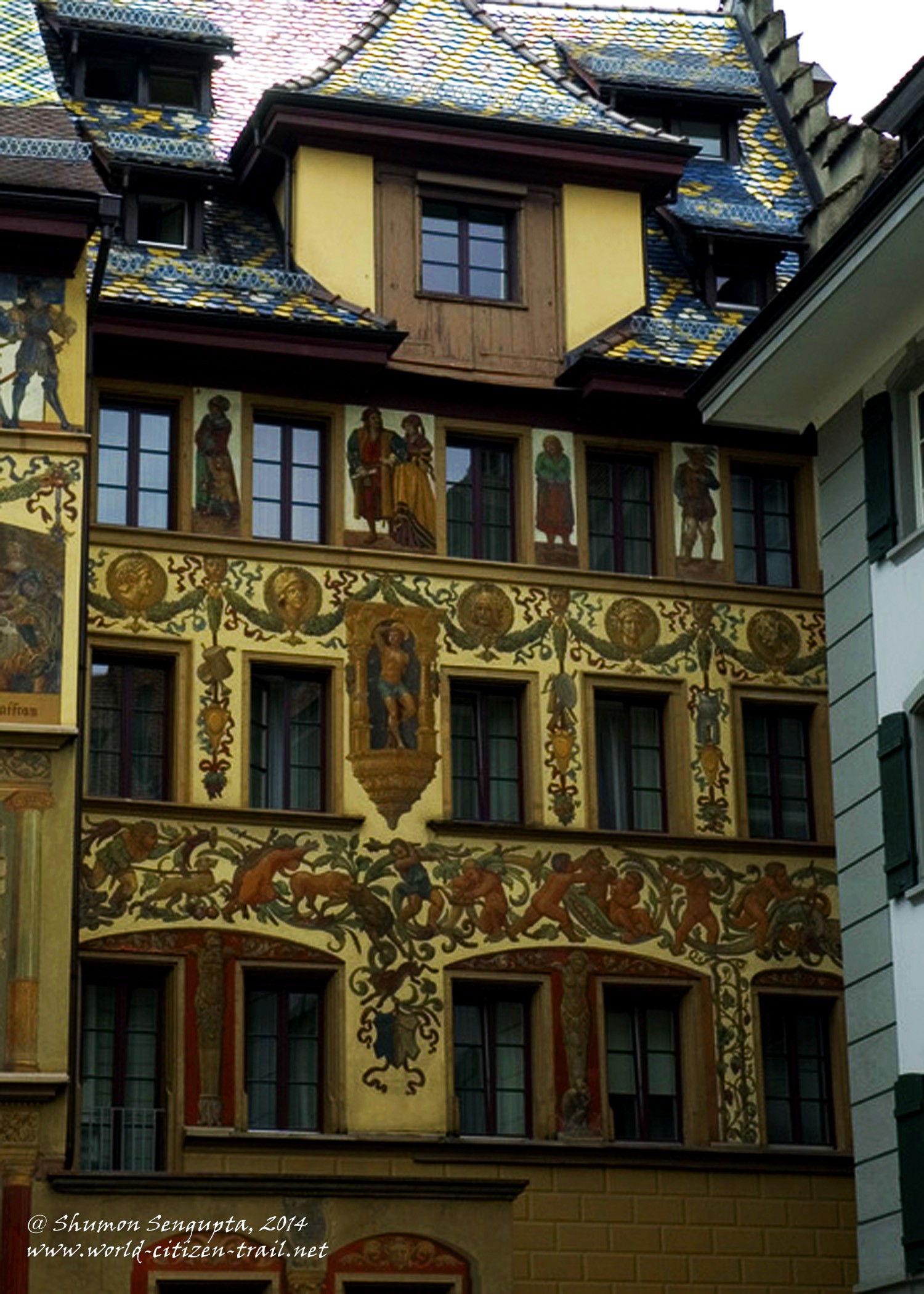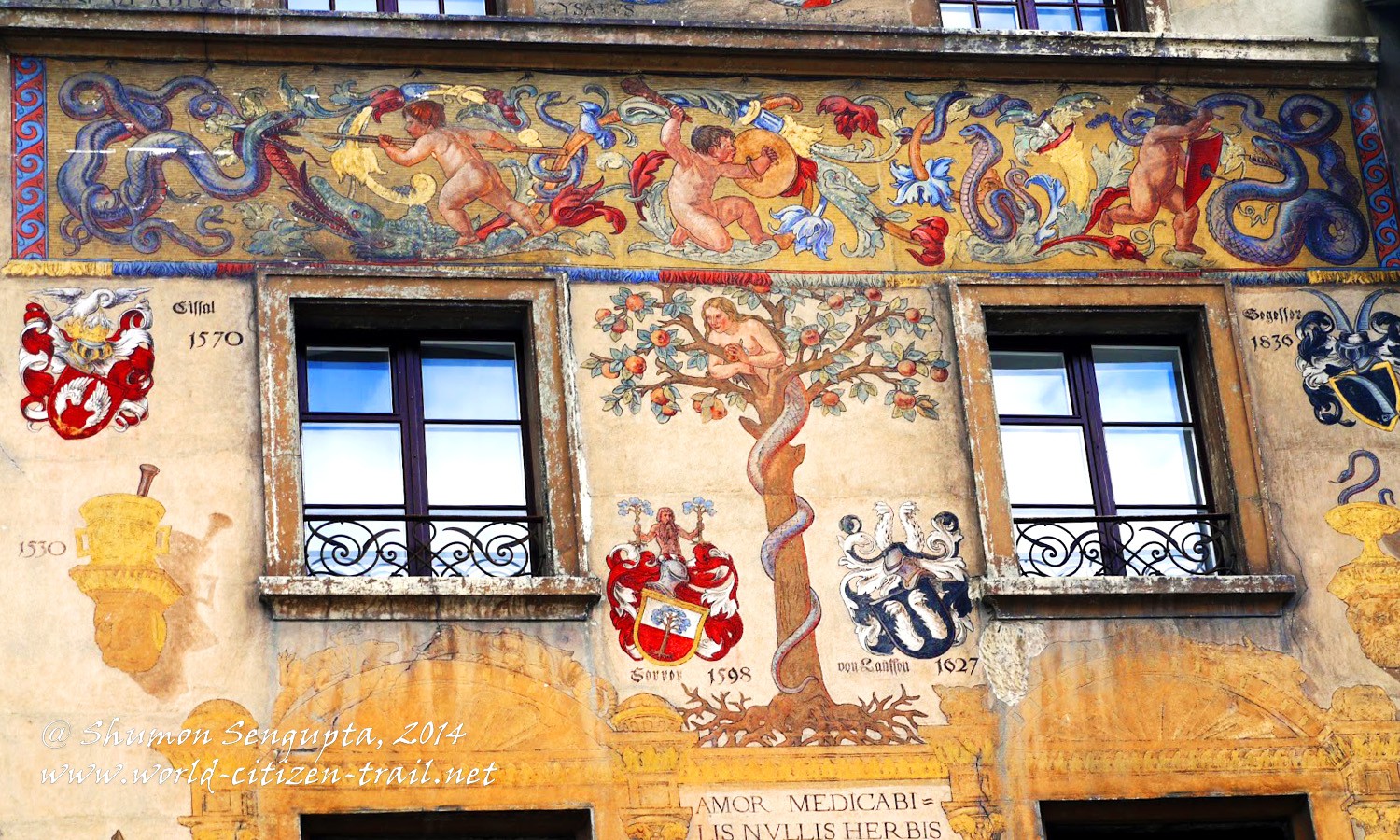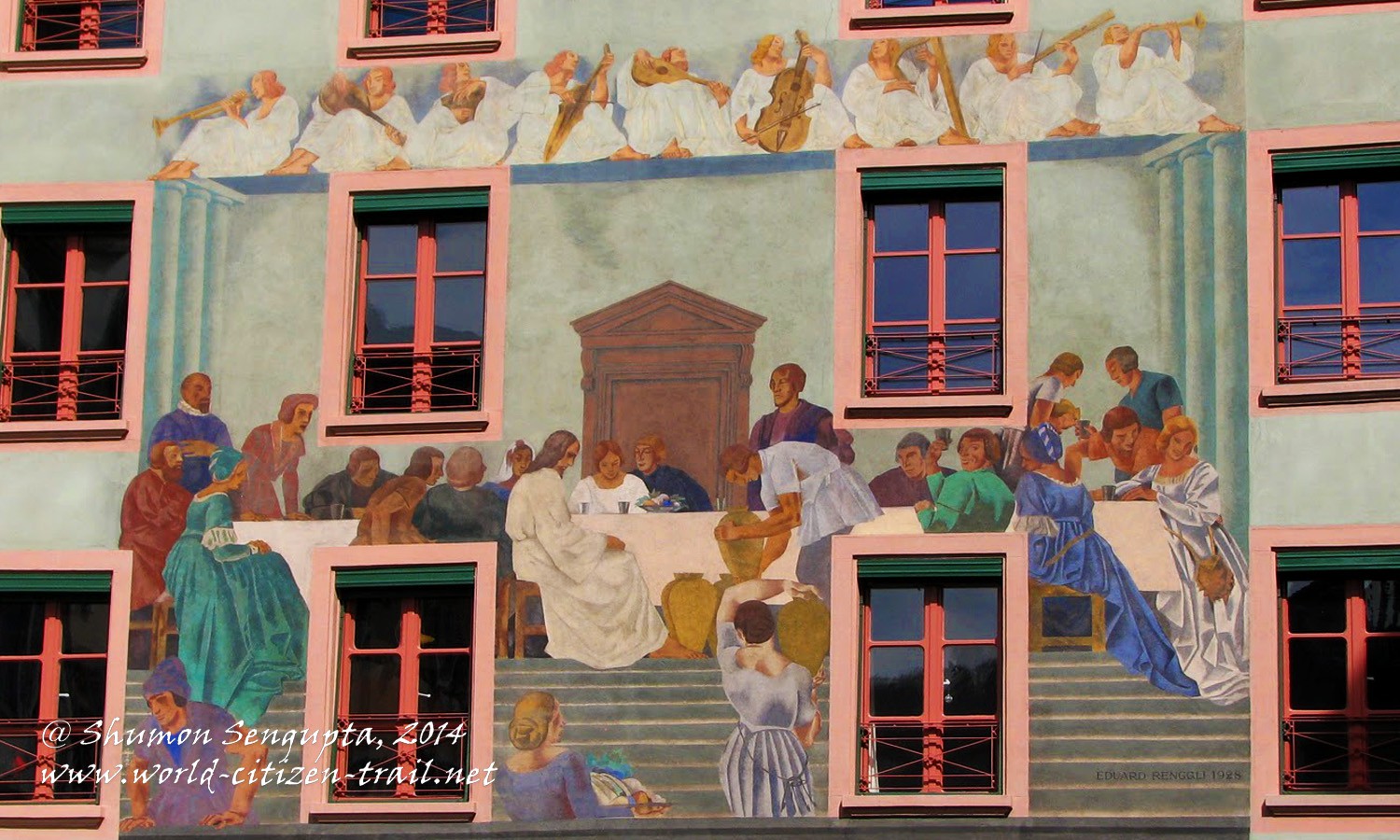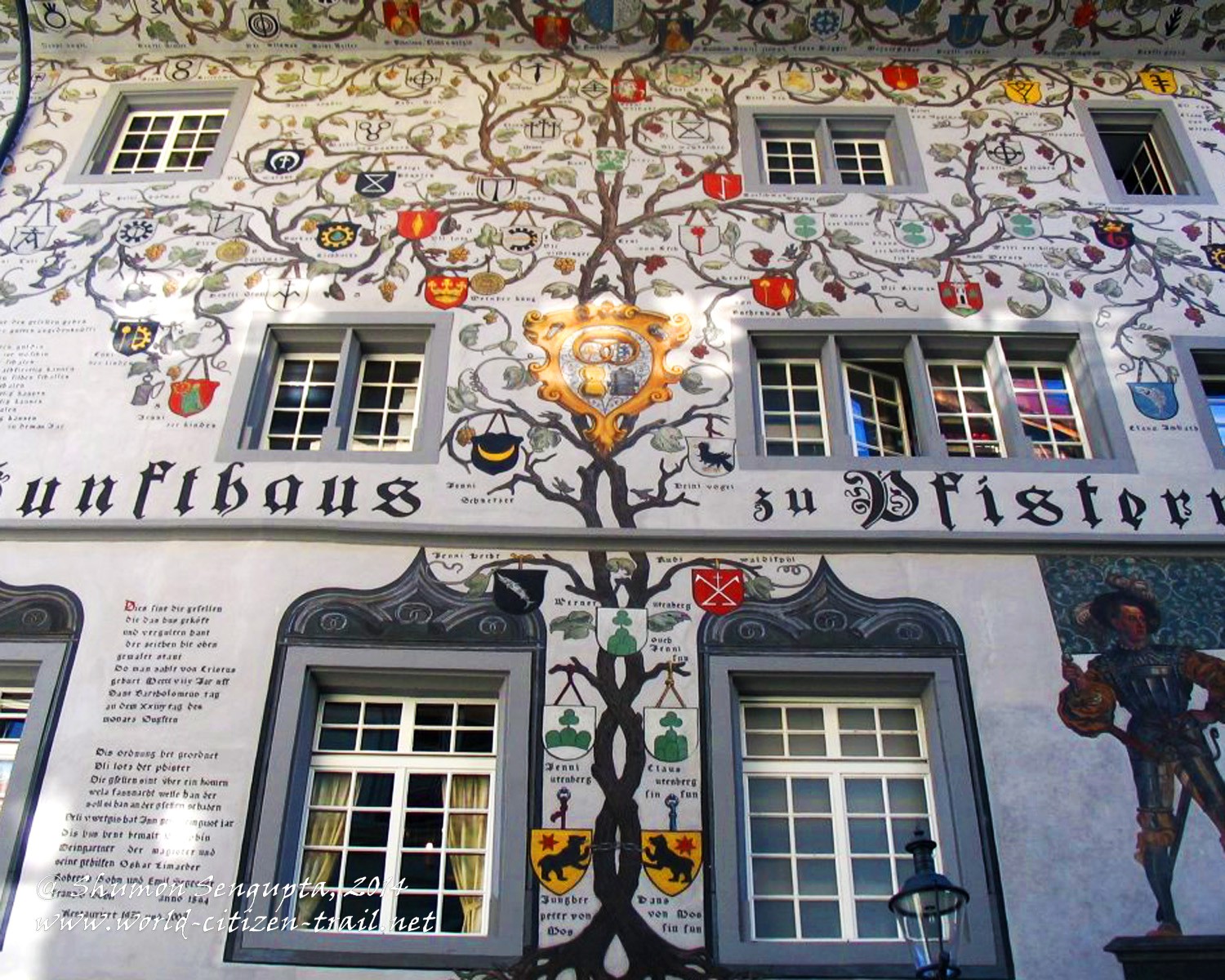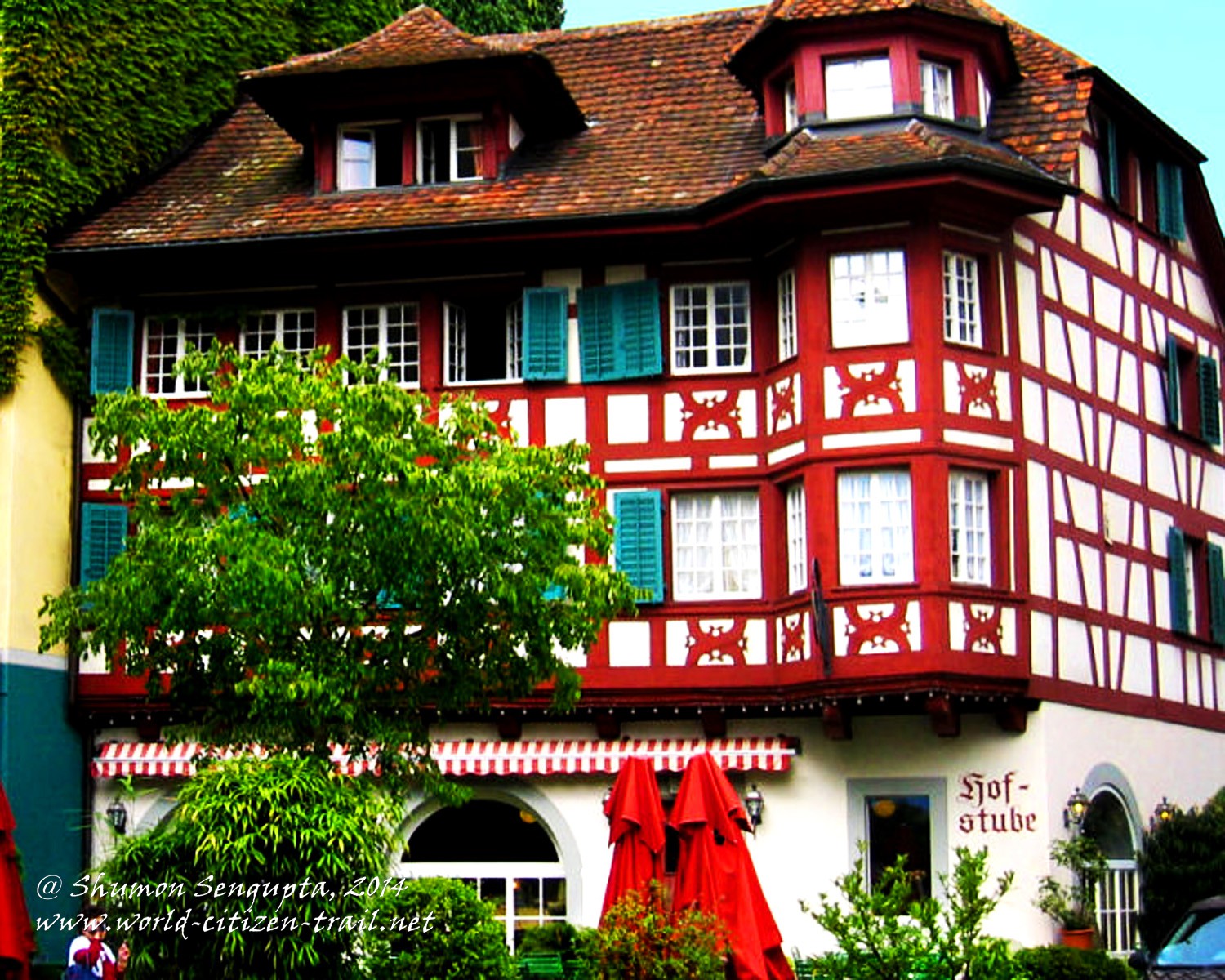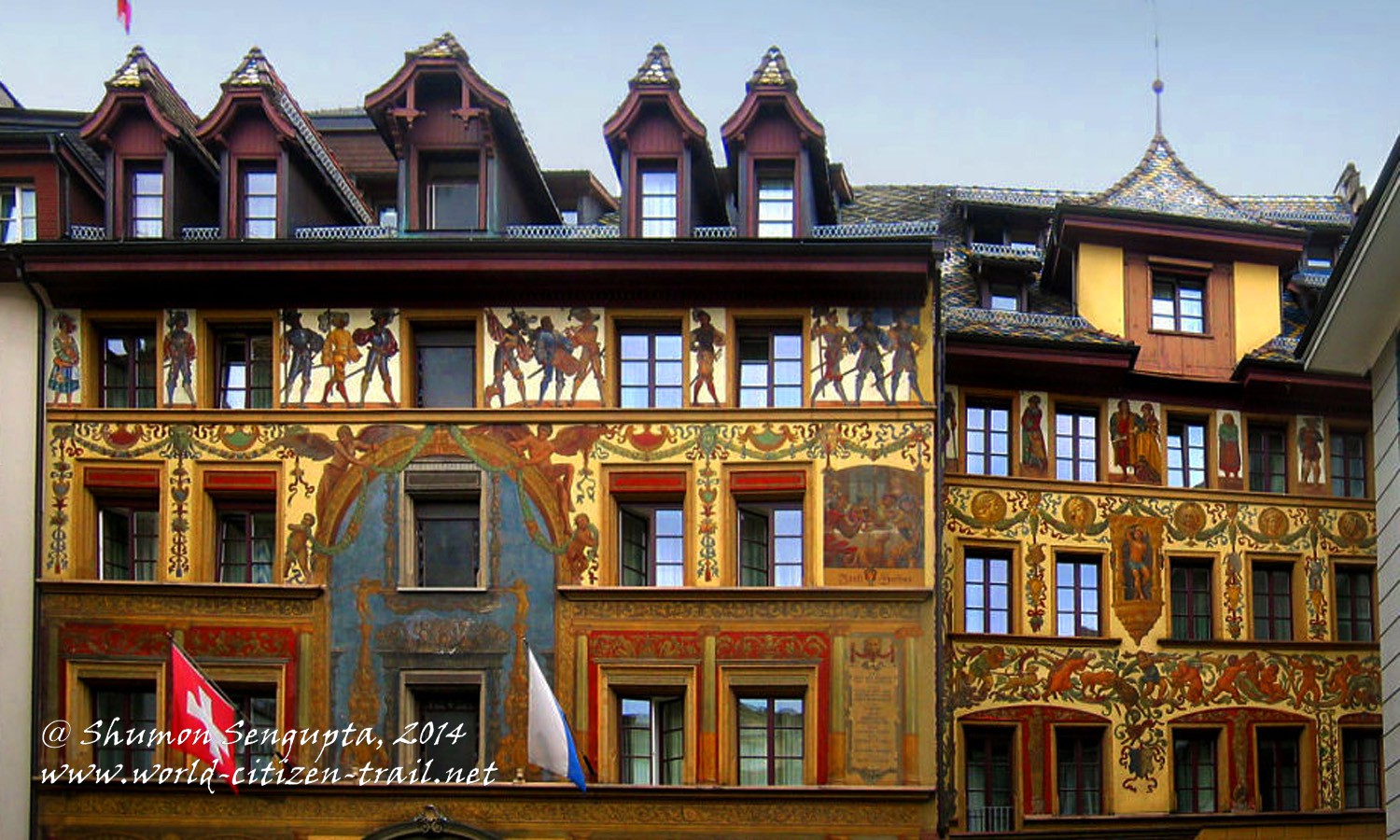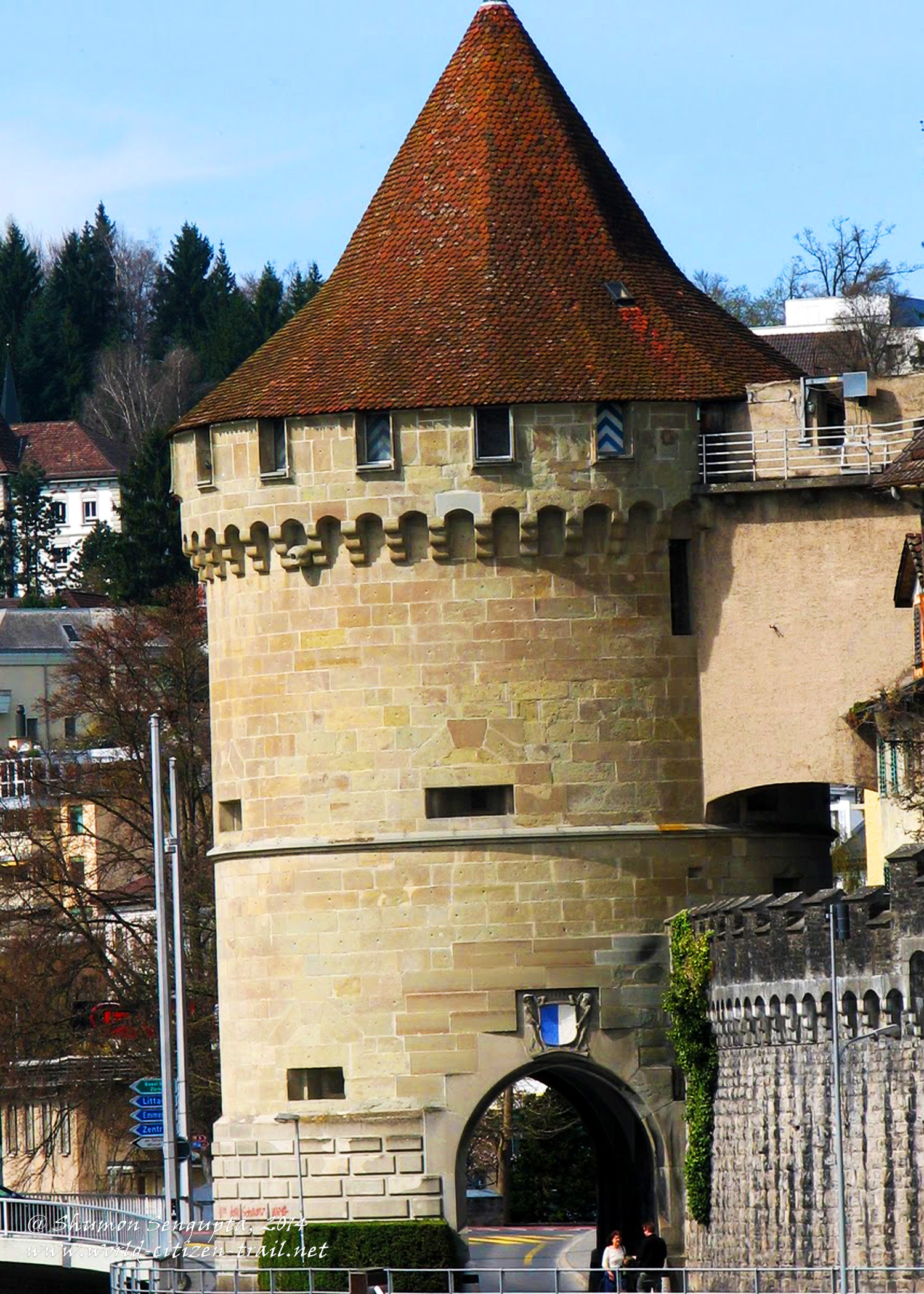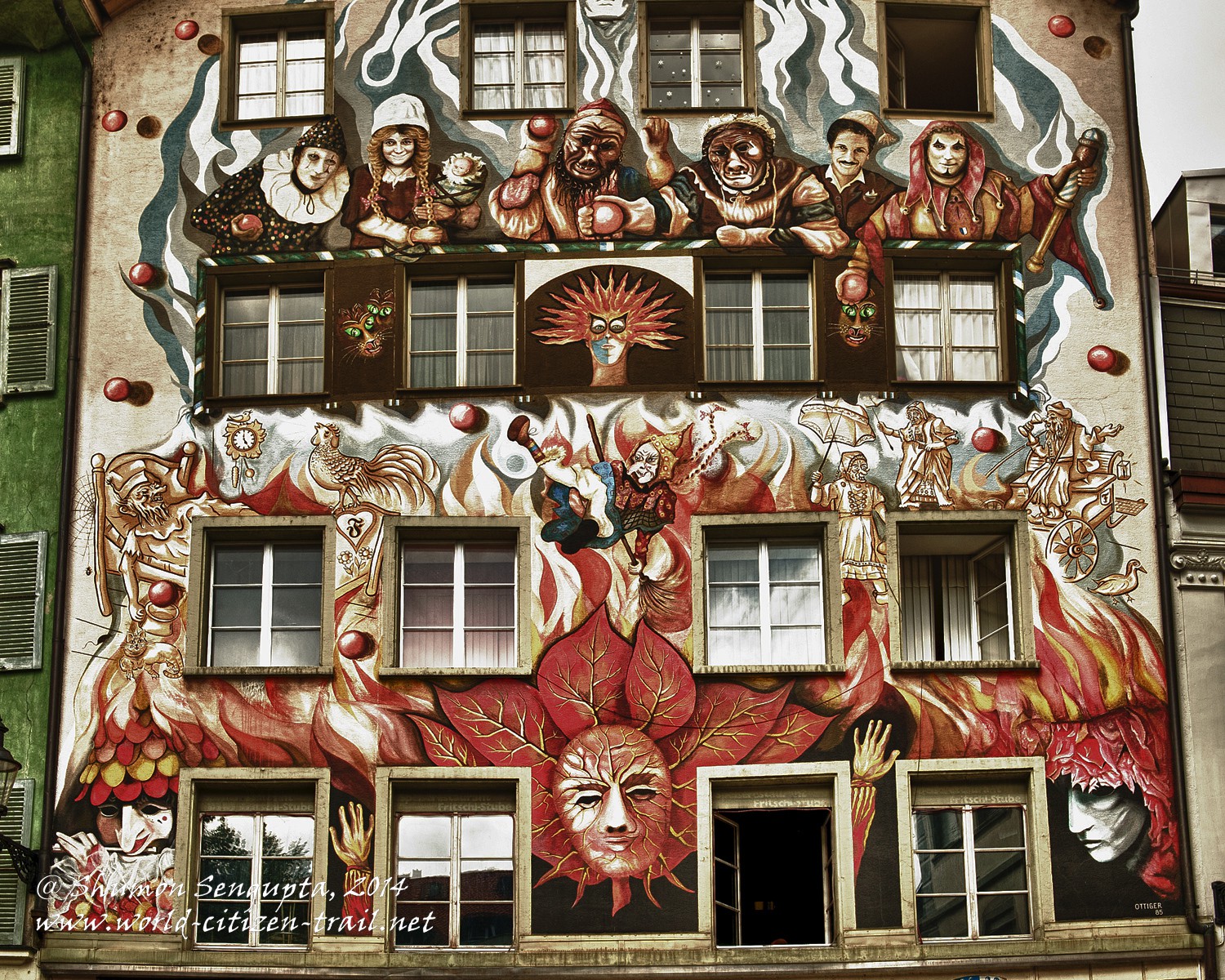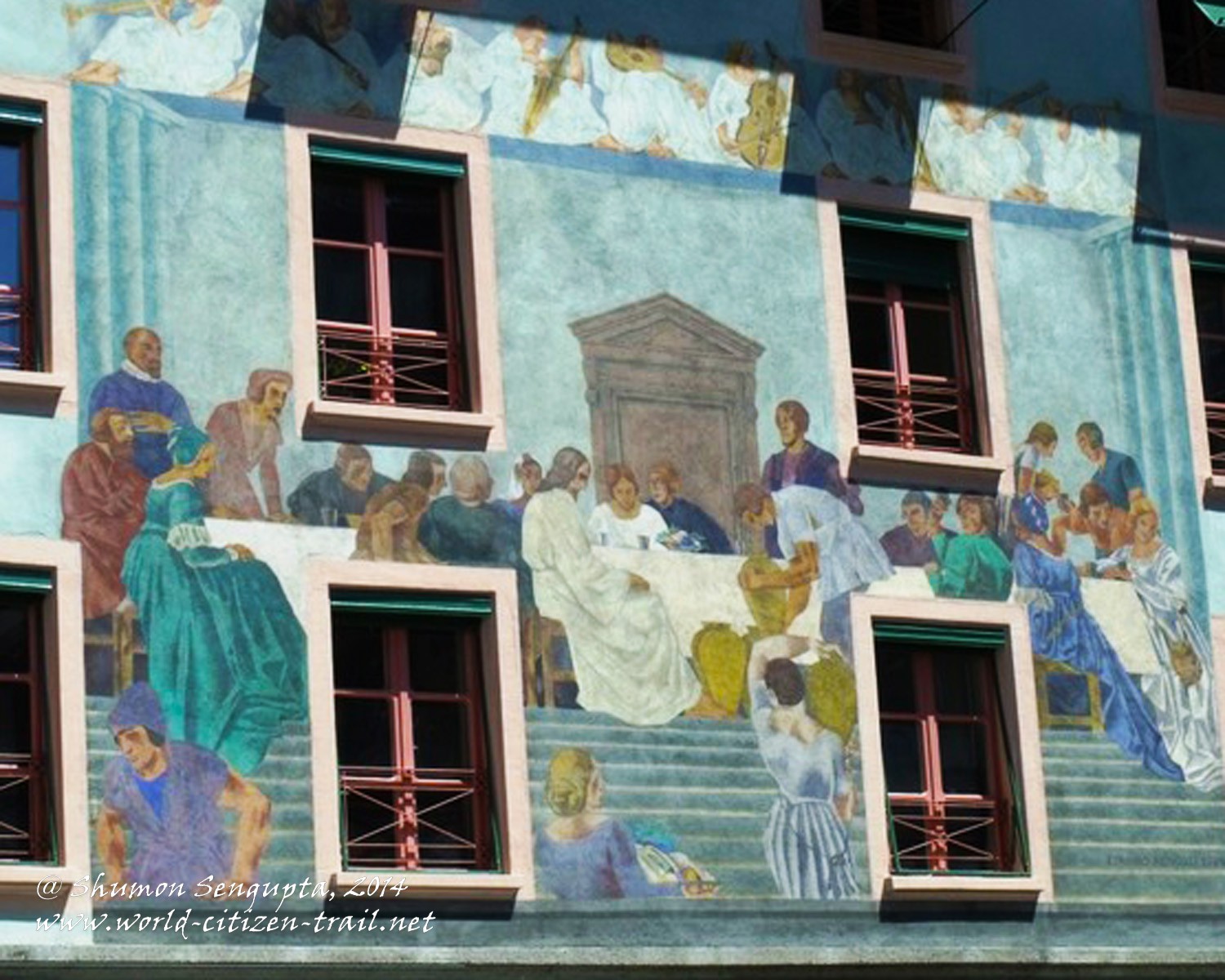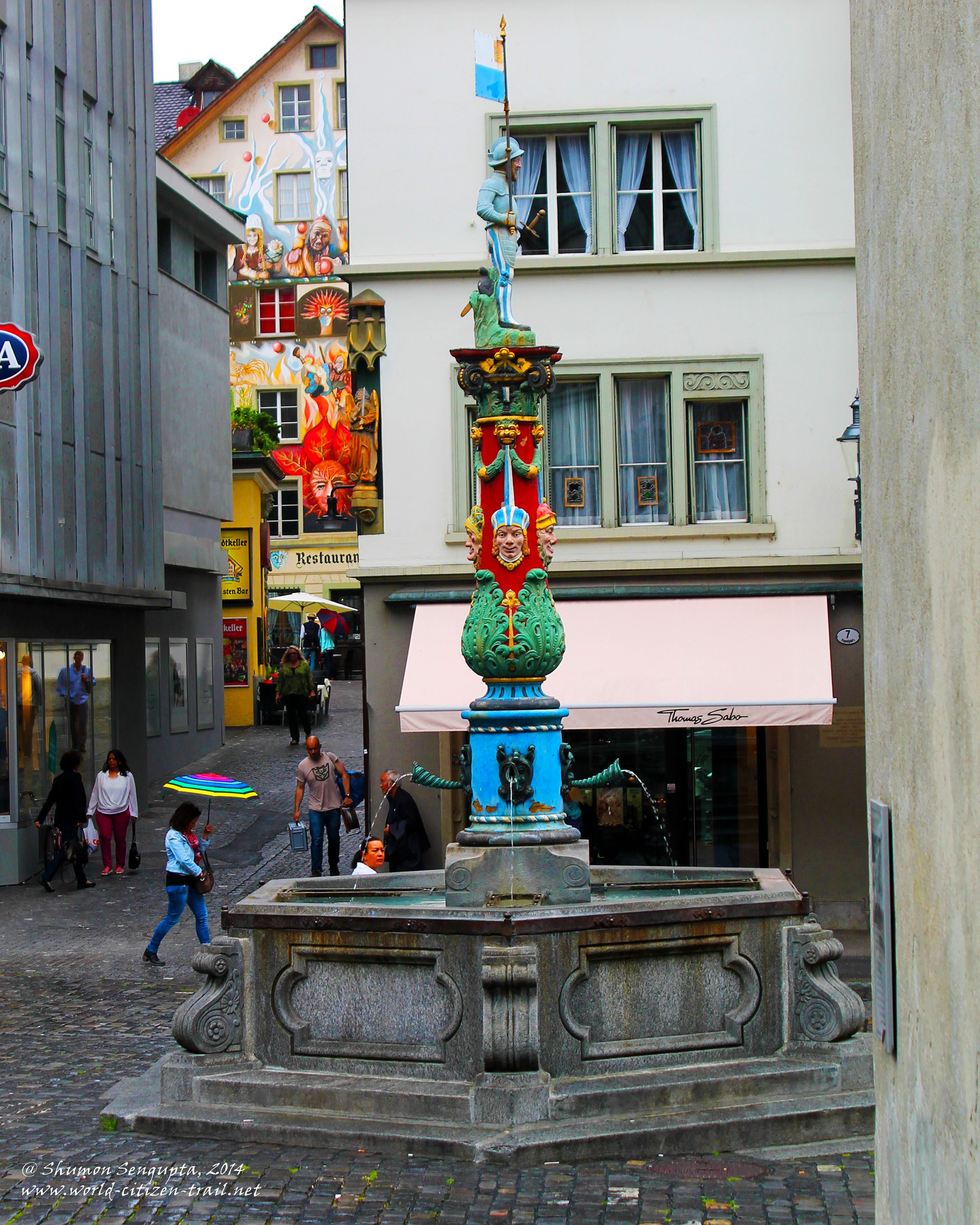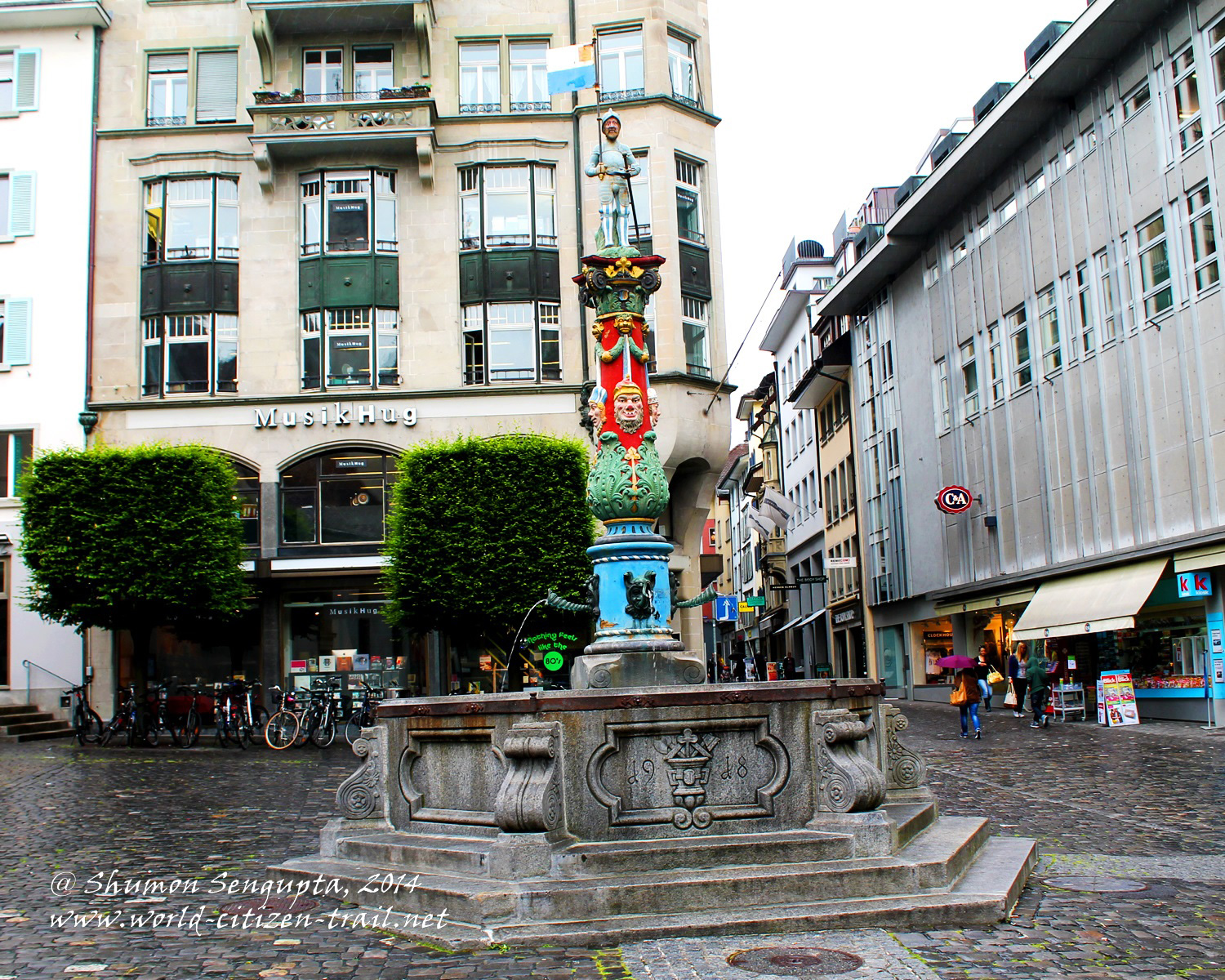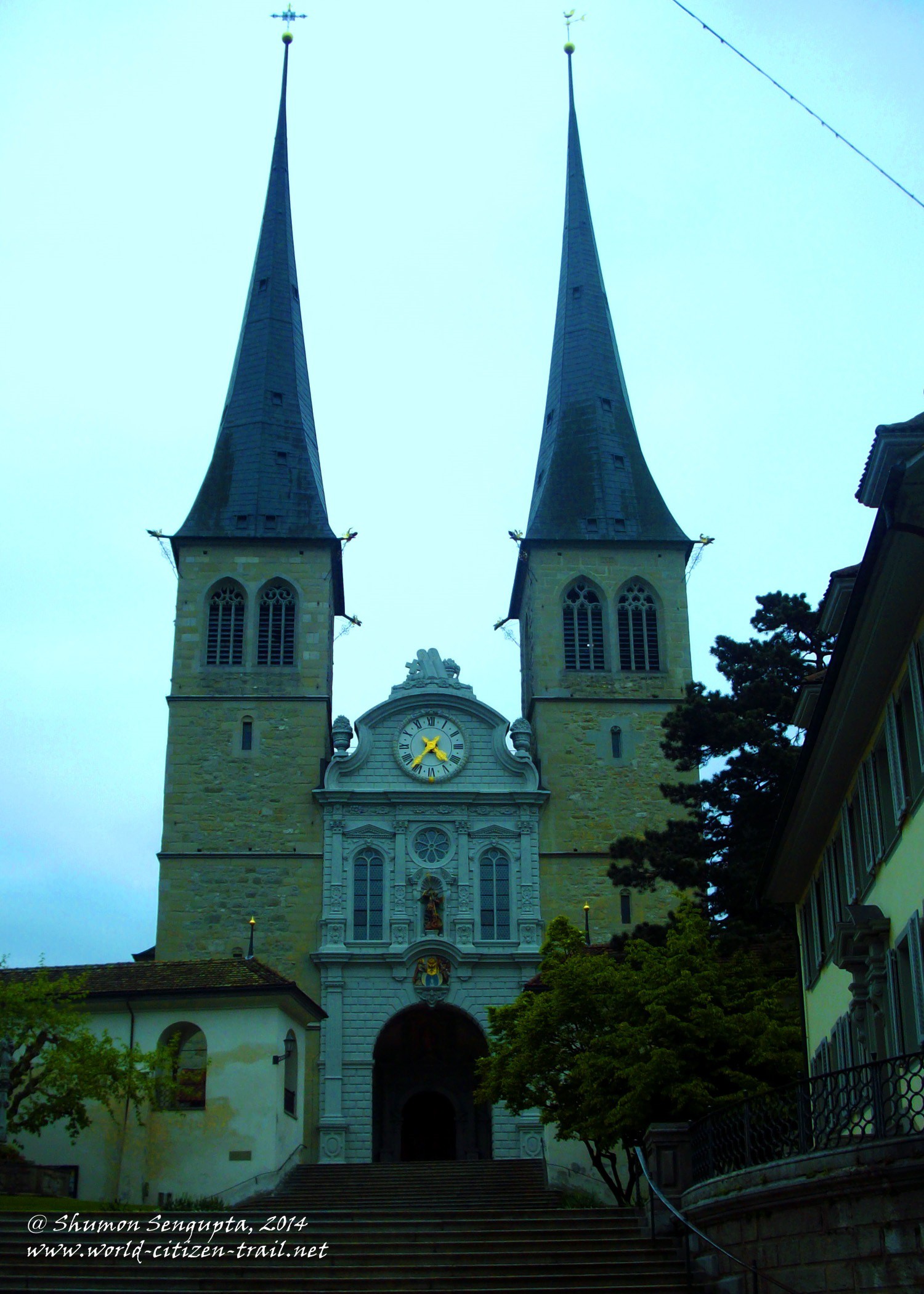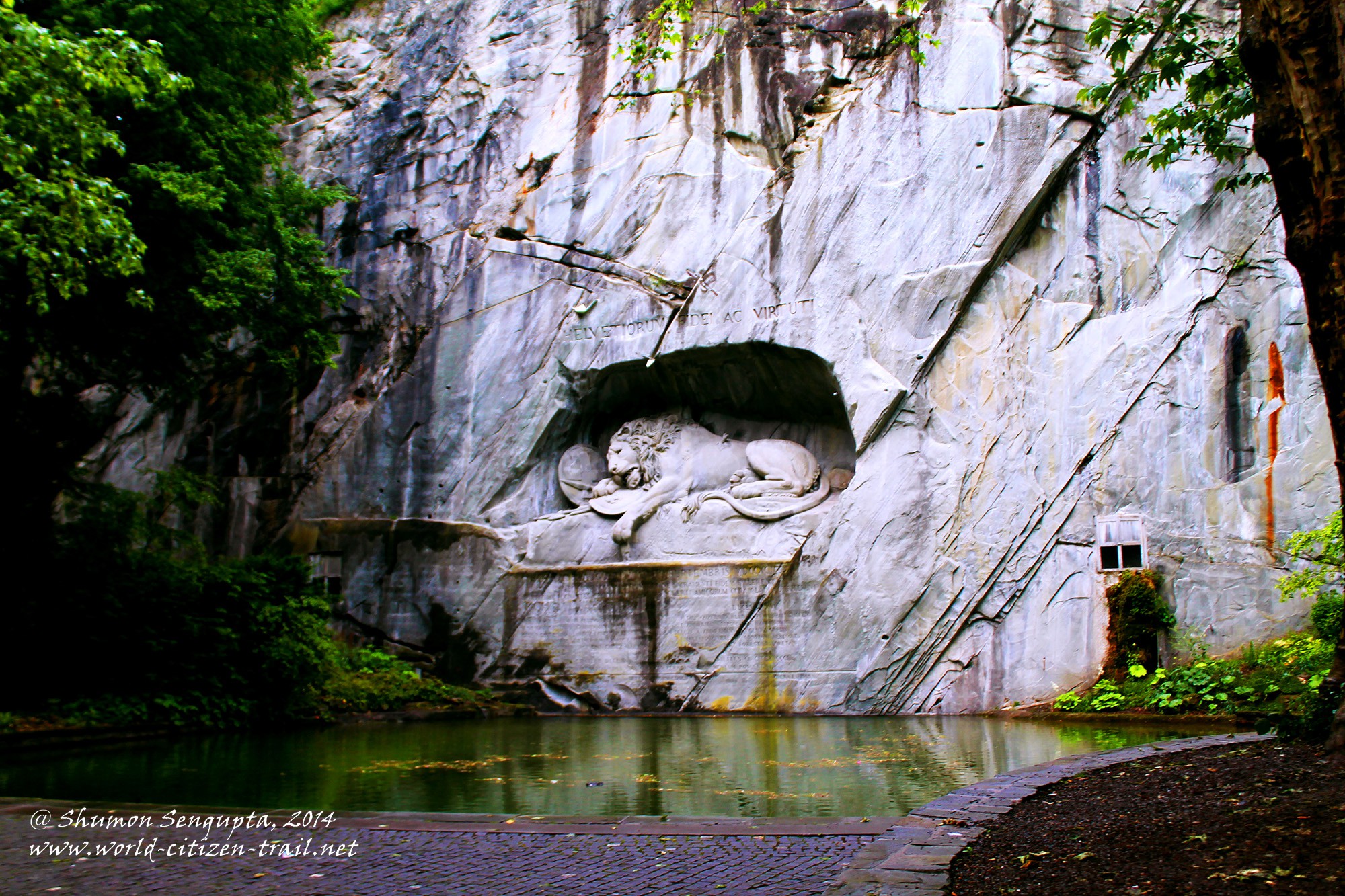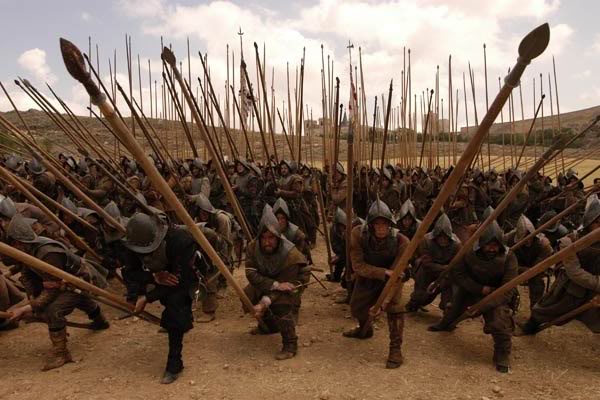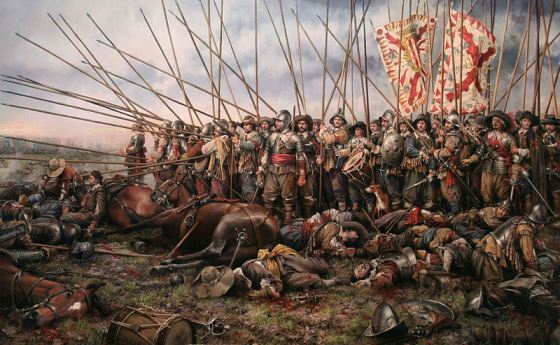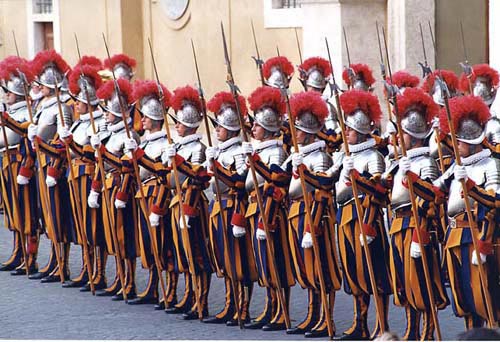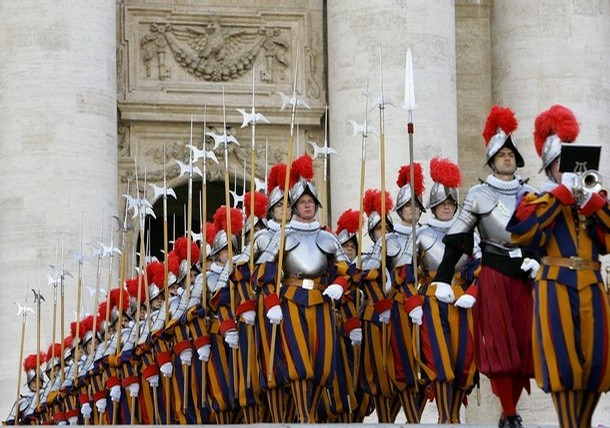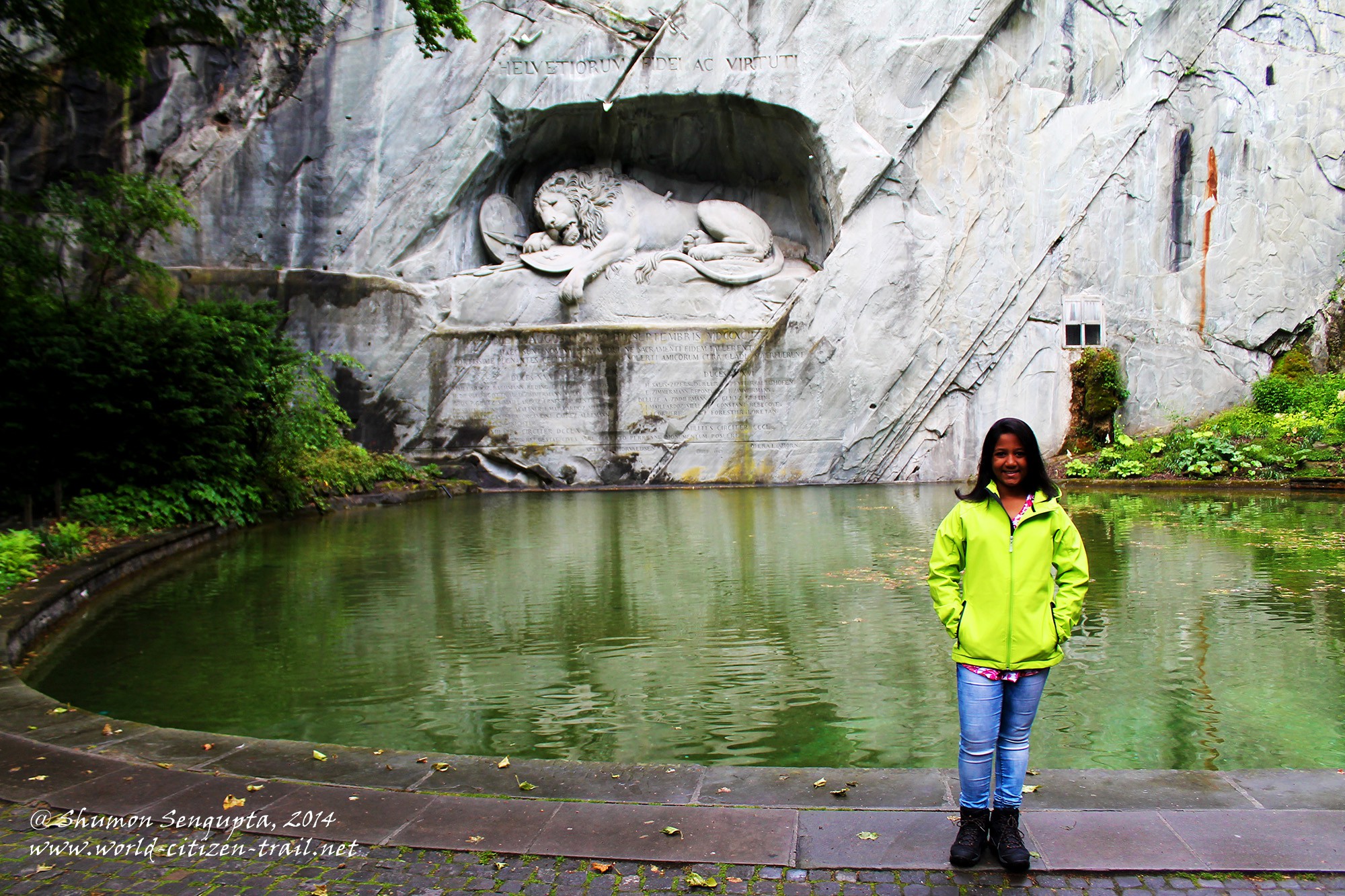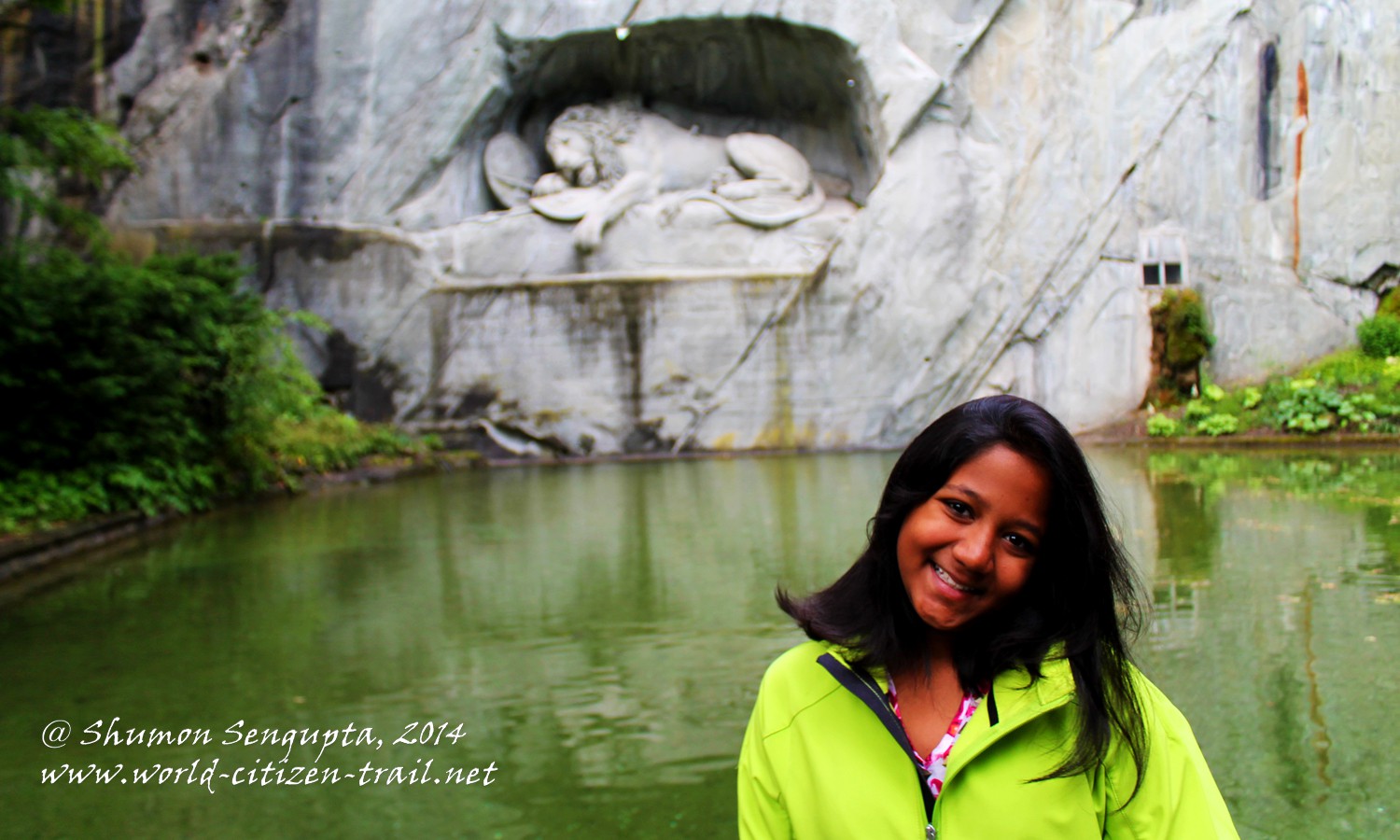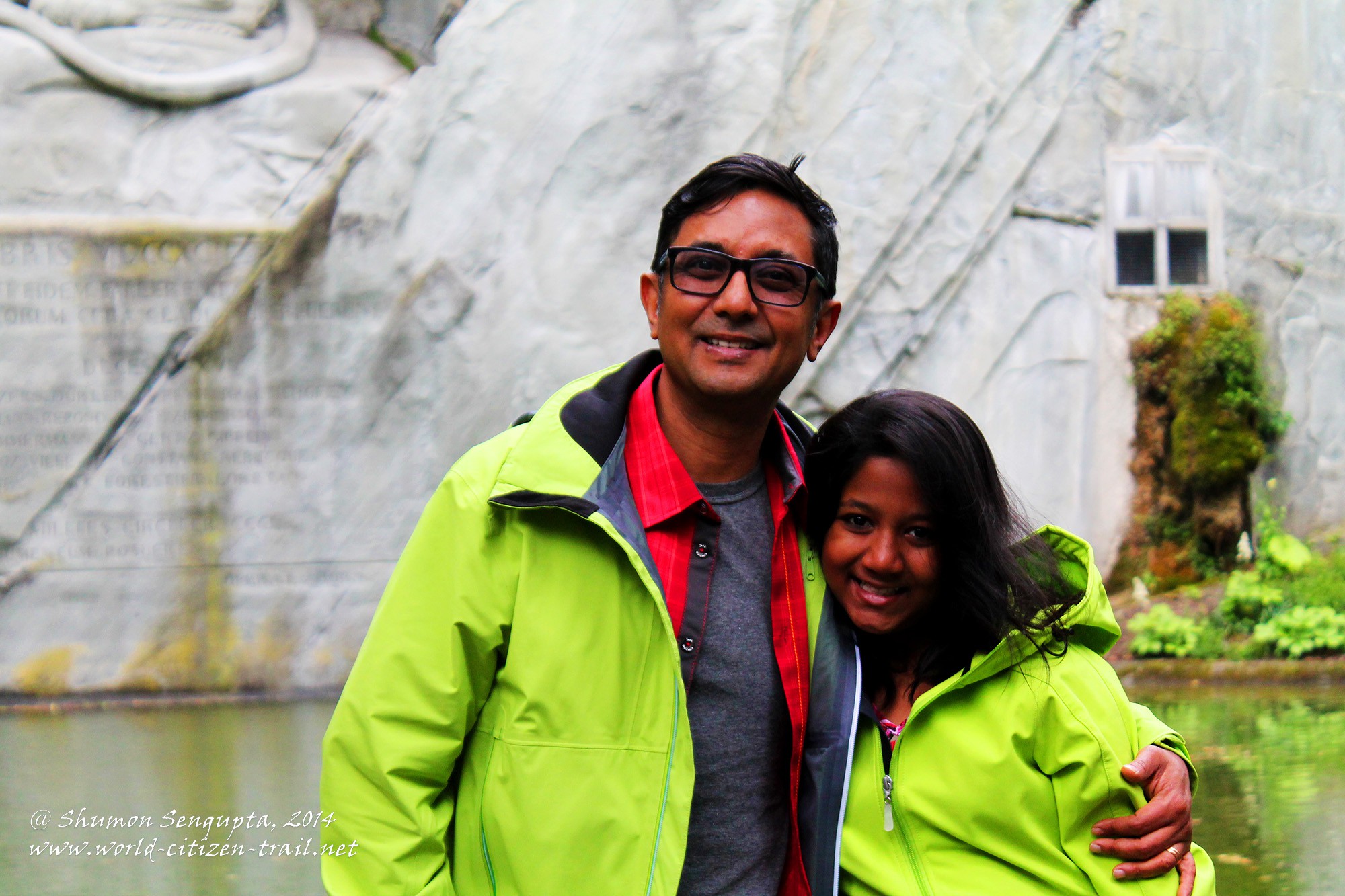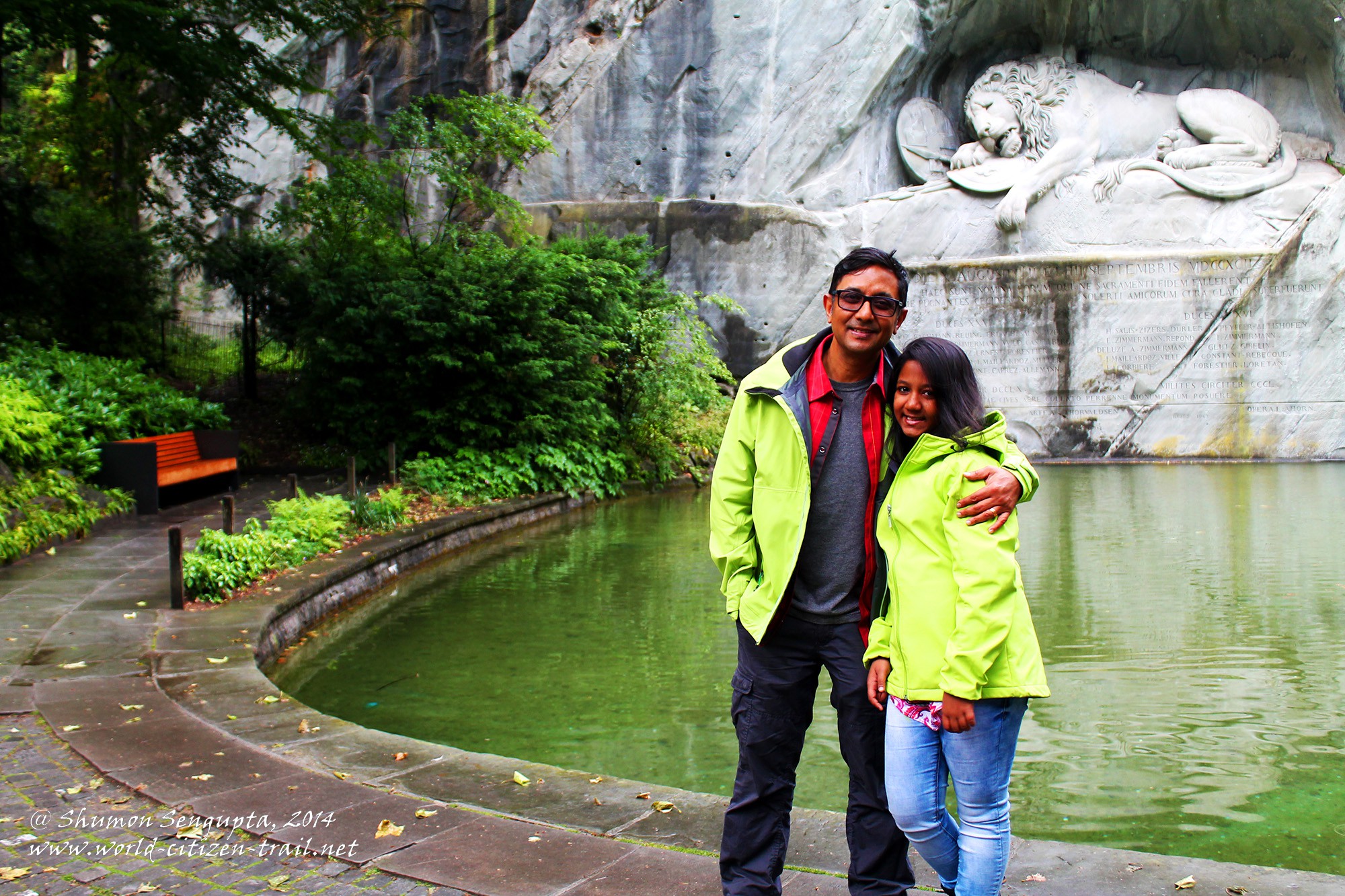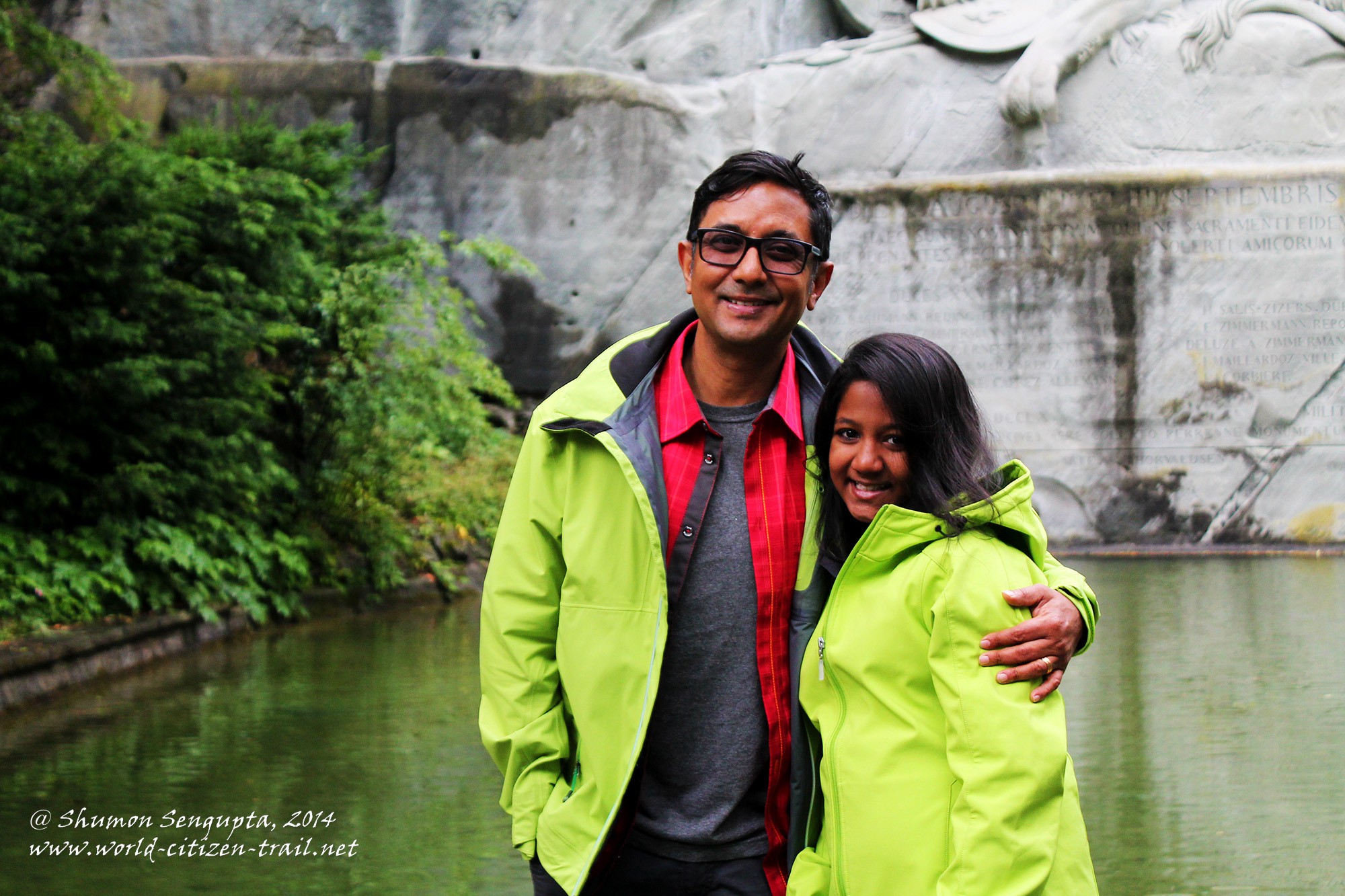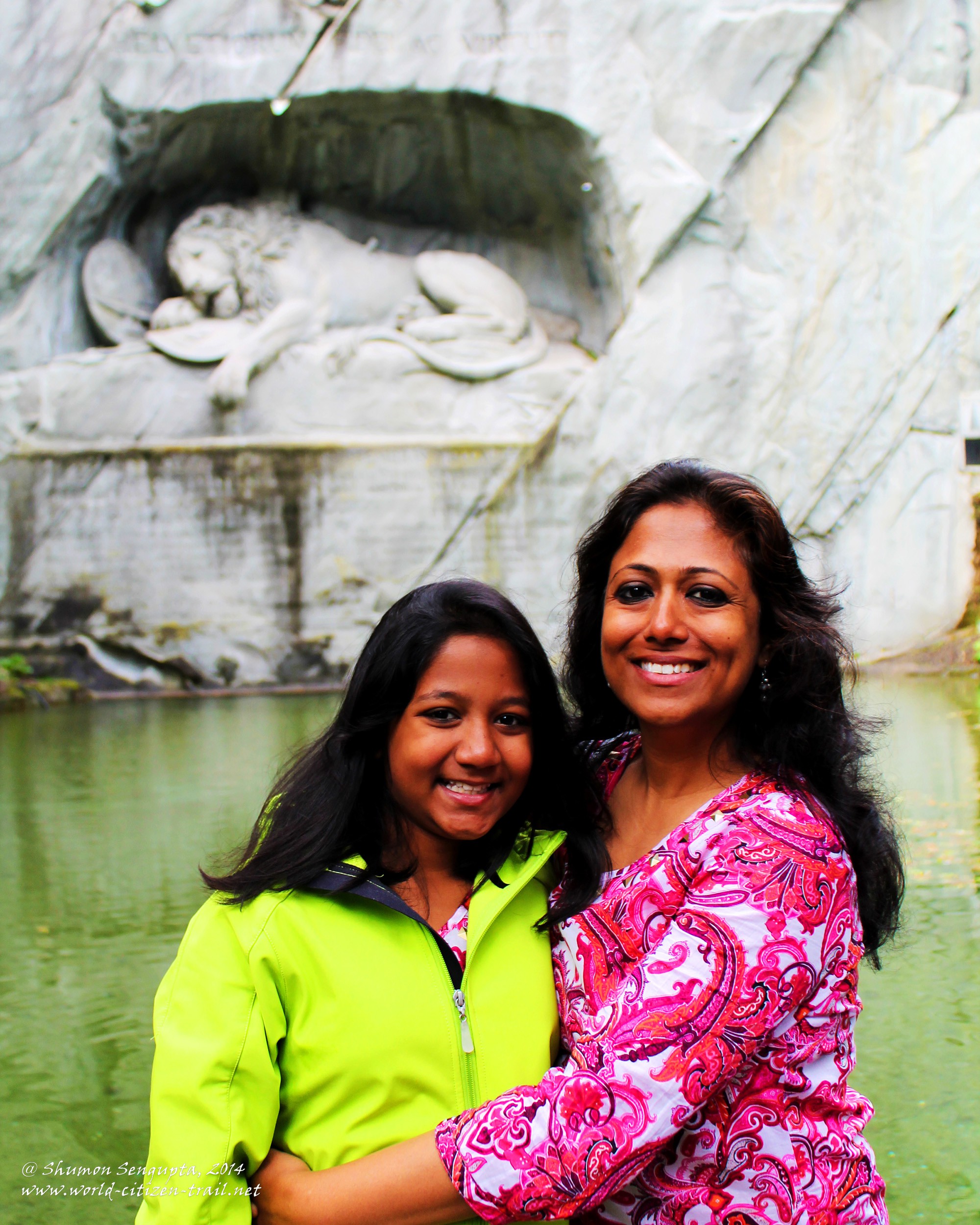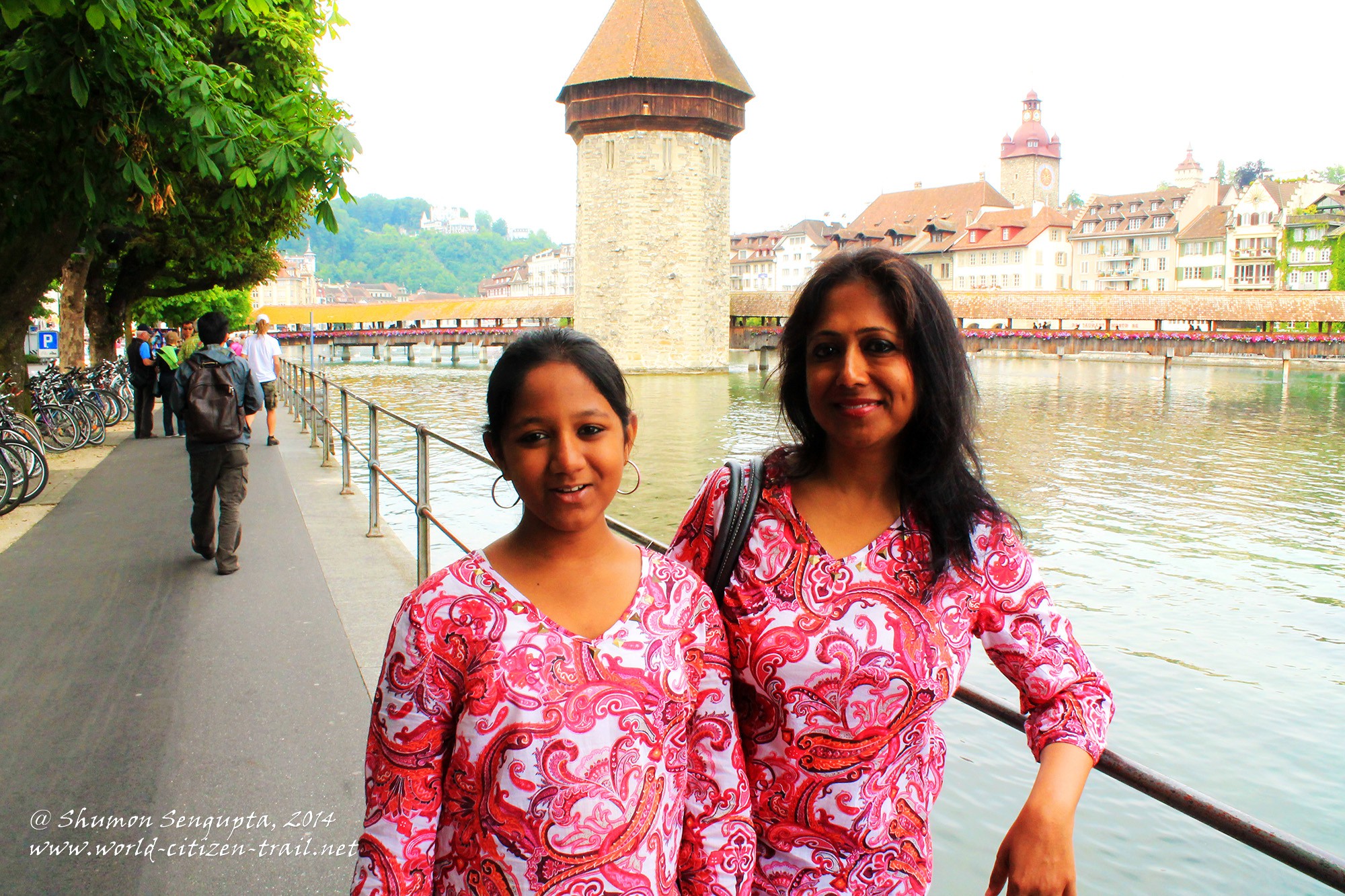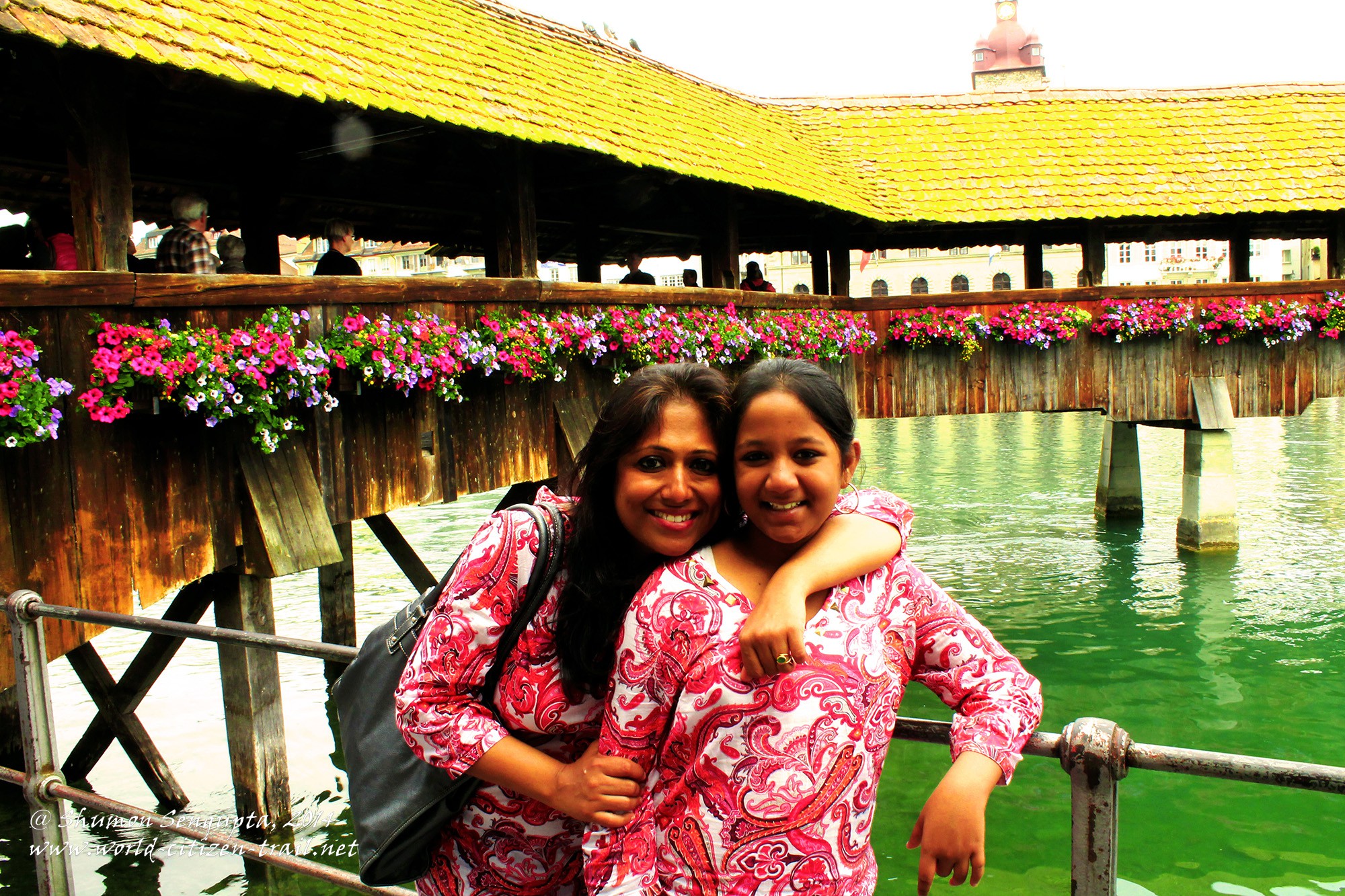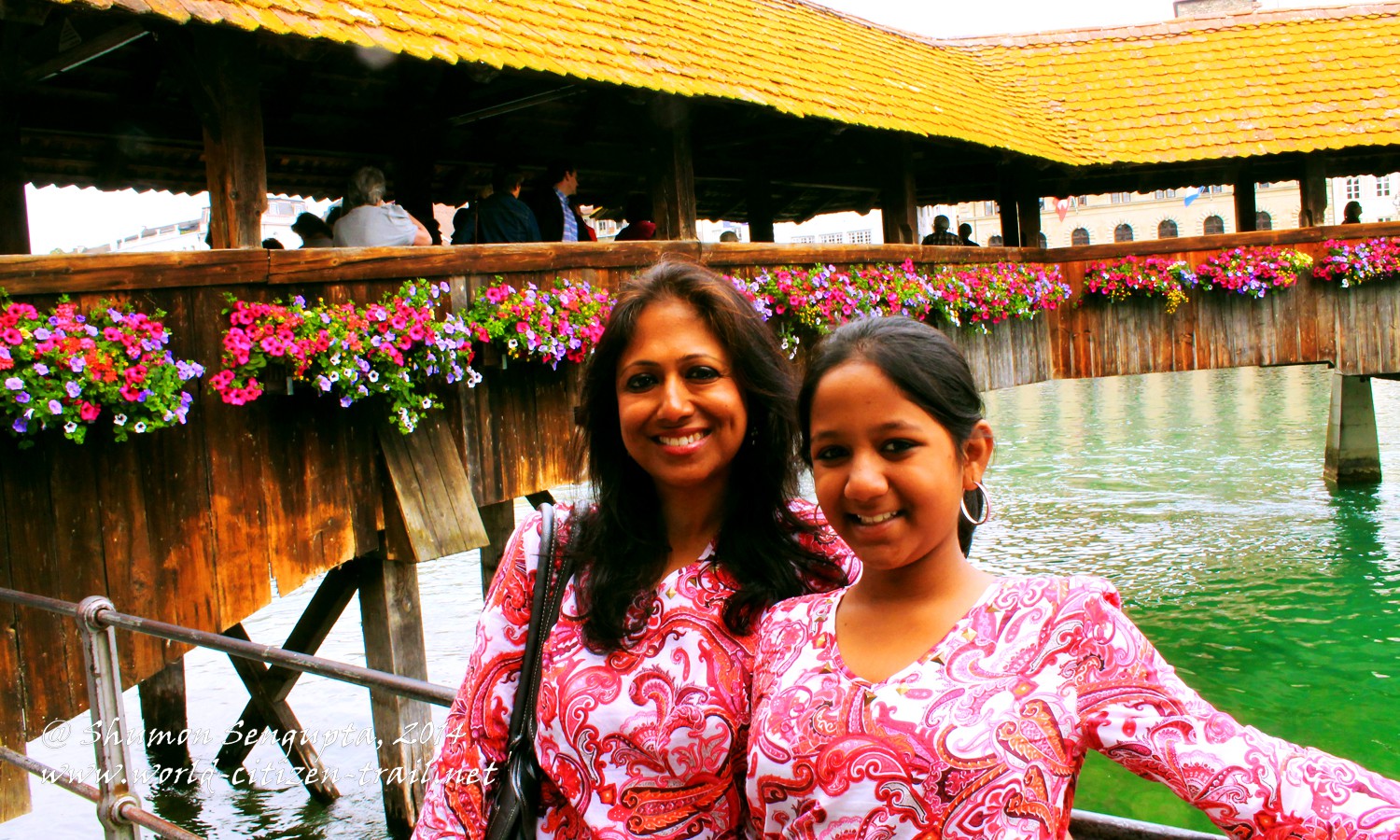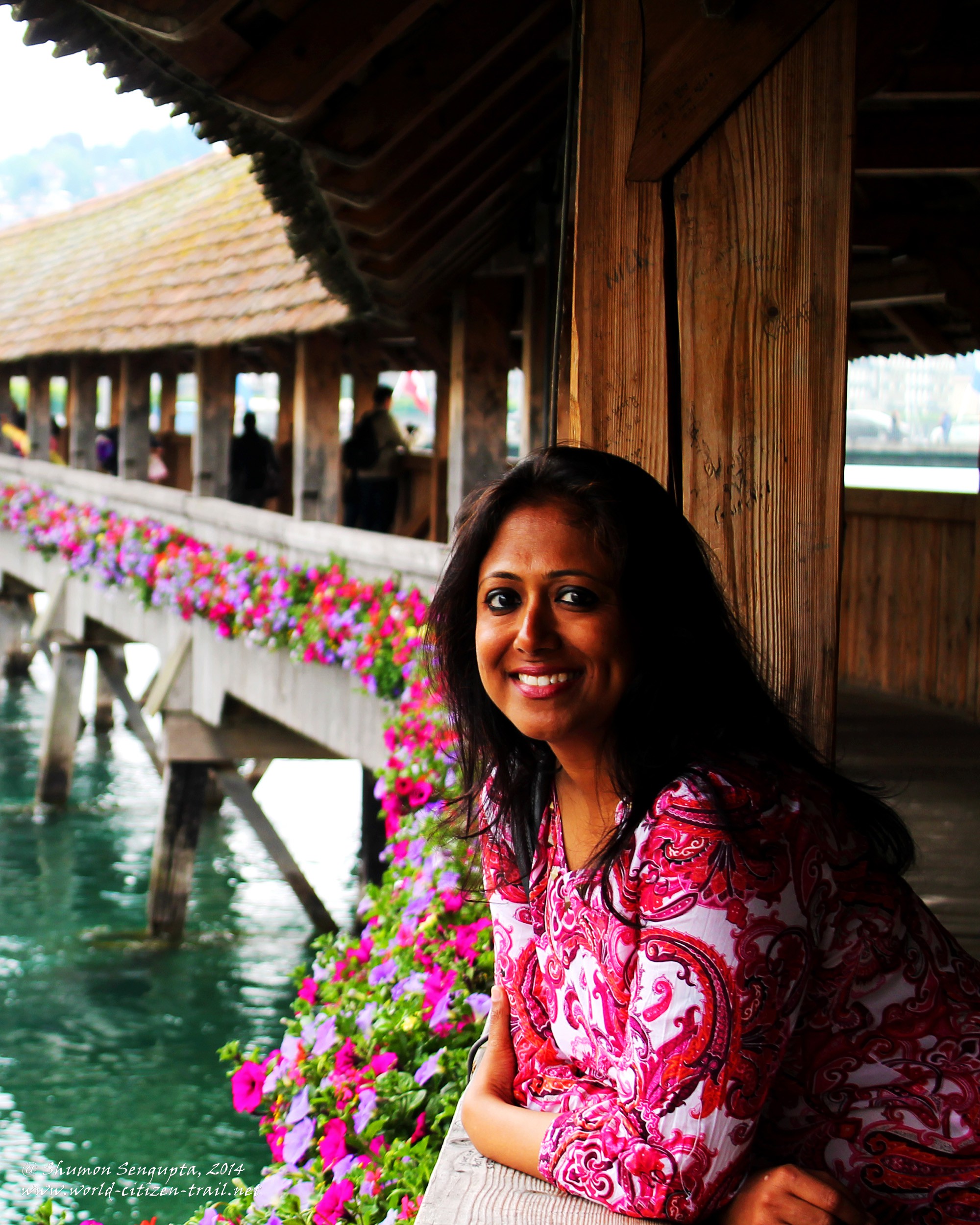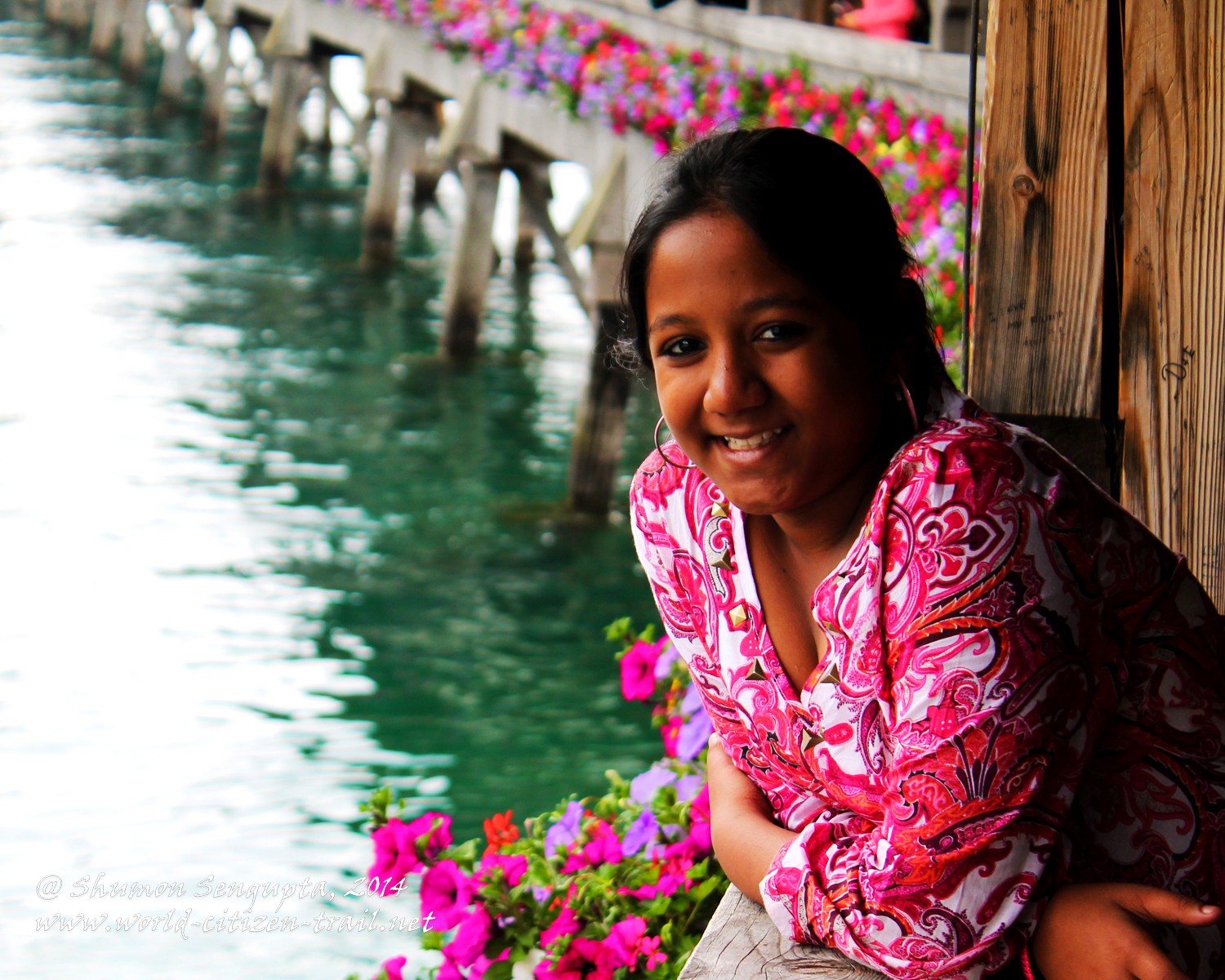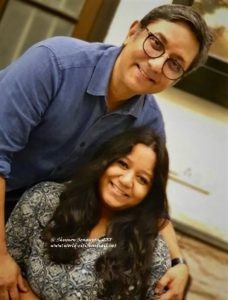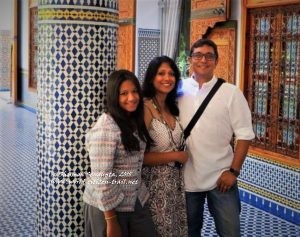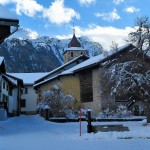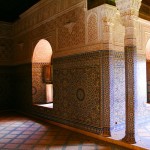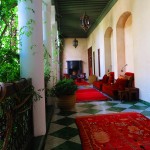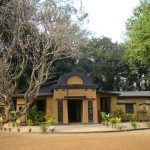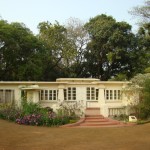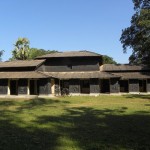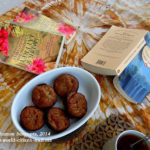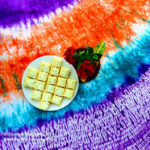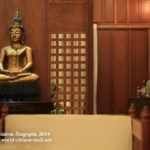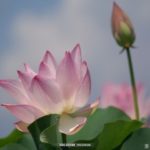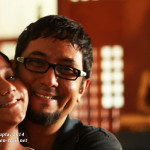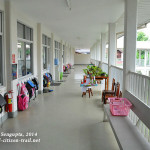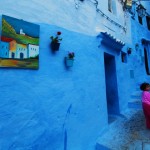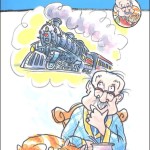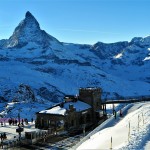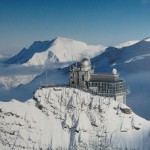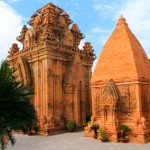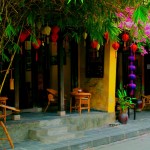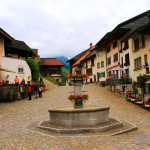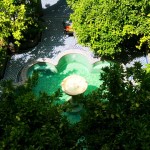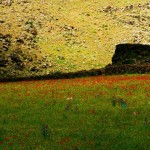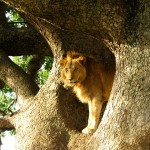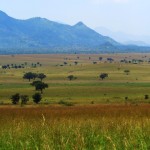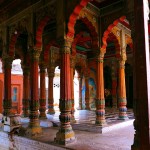We were in Lucerne (Luzern in German) for three nights, as part of our 24 day trip of Switzerland. Lucerne is located in central Switzerland, in its German speaking part and is a thriving and vibrant urban centre.
Surely Lucerne has to be one of the most beautiful cities in the world. Straddling the river Reuss, set on the northwest shores of a crystal clear aquamarine lake, framed by soaring snow capped Alps, a well preserved medieval old town (Altstadt) and a new town, both teaming with architectural delights, sub-bathed plazas, spectacular waterfront promenades lined by beautiful pastel shaded houses, a slew of museums and art galleries, a vibrant music, arts, carnival and entertainment scene, endless options for fine dining and innumerable options for day long excursions to the mountains, Lucerne has it all – probably as no other city in the world has.
Lake Lucerne:
Lake Lucerne is vast, placid and crystal clear. It takes on various shades of blue depending on the time of the day and weather conditions. Framed by snow capped mountains and rolling pastures, the scenic beauty and diversity of the lake can be discovered and appreciated by taking one of the numerous cruises available by paddle-wheel steamers, as well as motor vessels. There are several routes for cruises and you can spend a full day on the lake, with lunch on board.
Also, the Wilhelm Tell Express begins in Lucerne as a cruise that would take you along the lake all the way up to the foot of the Gotthard pass, from where you would continue by train into Ticino in the Italian speaking part of the country, south of the Alpine ridge.
The Chapel Bridge:
There are many bridges spanning river Reuss. But the most important one – a landmark structure closely associated with Lucerne’s identity is the Chapel Bridge (Kapellbrücke). A fascinating and beautiful 669 feet long wooden covered structure, this footbridge was originally built in 1333.
However a major part of the bridge was accidentally burnt down in a disastrous fire in 18th August, 1993 and the structure we see today is a contemporary construction, built as a replica of the older structure.
The footbridge spans from the Luzerner Theater on the southern bank of the river to St. Peter’s Chapel at Rathausquai in a rather curious zigzag path. While the structure we see above water is made of wood, it rests on stone columns, under water.
We walked along the parapet of the creaky wooden bridge, stopping at places to take in views of the river, the lake front and the mountains at a distance. By the side of the bridge we came across the tall octagonal ‘Water Tower’ (Wasserturm), part of a 13th century fortification system. The body of the water tower is medieval, whereas the gabled roof is a modern construction, rebuilt after the 1993 fire. Very interestingly, while the tower is 35.5 meters tall, its outer circumference is 38 meters long, i.e. the circumference of the tower is longer than the height of the tower – a fact that cannot be perceived by the eye.
I am not sure why it is called the water tower, because it does not hold water. It was initially built as a watch tower and subsequently used as an archive, a treasure and also a prison cell (particularly the lowest room with its thickest walls) and a torture chamber.
The lake-side parapet wall is higher than its opposite wall and this was meant to enable soldiers to rest their weapons on top. The lower outer edge of the parapets were lined with flowerpots, laden with spring flowers.
Crossing over the bridge, we checked out the triangular panel paintings placed under the eaves of the rooftop. Originally painted by Hans Heinrich Wägmann in the 17th century, these panels depict scenes from the history of Lucerne, in addition to legends from the lives of city spiritual patrons – Mauritius and Leodegar. Before the disastrous fire there were 147 triangular panels and after the fire, merely 47 panels survived, of which 30 have been restored. The panels that we find now are mostly modern day replicas of the original paintings – nothing particularly to talk home about.
Needless to say, the Chapel Bridge is a unique and spectacularly beautiful structure and is one of its kinds. It is best viewed in the late afternoon against the setting sun, when it is bathed in a golden light, giving it an incredibly romantic and timeless feel.
Promenades and Old Town:
The well preserved medieval old town in located north of the Reuss River, on its right bank. With an incredible medieval charm, the old town has a labyrinth of pedestrian cobbled streets and lanes – it an ideal place to roam aimlessly and get lost for some time.
The car free old town has charming cobbled stone squares or plazas (the Weinmarkt, Hirschenplatz and Kornmarkt) surrounded by historic buildings (residences, hotels and shops) richly painted with colorful murals. One can spend a full day, just admiring the plazas, buildings and fascinating frescoes.
Remnants of the old town wall (the Museggmauer – part of the medieval fortification system), along with its eight watch towers can be seen till date on the hill overlooking Lucerne. There is another tower – a gated one located at the foot of the hill, on the banks of the river.
Lucerne also has its share of old and beautiful churches, namely the Jesuit Church built in 1666 and the Hofkirche (the Church of St. Leodegar, the city’s patron saint) originally built in 735 and subsequently rebuilt in 1633, with its prominent twin towers. The Hofkirche sits on a small hill just above the lakefront.
As mentioned earlier, Lucerne has some fascinating museums and art galleries.
Angela Rosengart was a Swiss art dealer and close friend of Picasso. The Rosengart Collection has over 200 works by over 20 artists of early modernism. It has 50 or so paintings by Picasso and 125 works of Paul Klee, in addition to works by Cézanne, Chagall, Miró, Monet, Pissarro and Matisse.
The collection also has 200 photographs by David Duncan Douglas (the WW – II photo correspondent, who also photographed Picasso extensively). Through Douglas’s photographs, one can get insights into parts of Picasso’s daily life at his Villa California where Douglas was a guest.
And then, there is the famous Swiss Transport Museum – a sprawling place with its large collection of trains, planes, automobiles, motorcycles, space travel exhibits and miniature of a working steam train. It has its own IMAX cinema and is a great bad-weather-option in Lucerne.
In addition, Lucerne also has a modern, rather futuristic building that houses the Culture and Convention Centre (KKL), designed by French architect Jean Nouvel. Along with its water body and an impressive fountain, this building includes an impressive concert auditorium, a convention centre and the art museum. It serves as a vibrant venue for cultural events round the year.
Lion Monument:
And now about the iconic Lion Monument – the Löwendenkmal.
This exquisite and famous carving of a dying lion, chiseled into a rock face is to be found in a small park off the Löwenplatz. It is a 15 minute walk from the Chapel Bridge.
This 10 meter long sculpture was made in 1820, in the memory of hundreds of Swiss Guards (mercenaries) who were massacred in 1792 during the French Revolution, when an armed mob stormed the Tuileries Palace in Paris. The Swiss mercenaries were guarding the palace at that time and had died defending King Louis XVI.
While the work was no doubt sublime in its aesthetic impact and sad and evocative power, I thought why make a big deal about mercenaries who died trying to protect an archaic, medieval feudal system, that too in a foreign country? They were mercenaries after all, whose services were available to anyone who paid them and on top of that, they did not die protecting their own land!
That led me to some Swiss Military history.
After the crushing defeat of the Swiss by the French in 1515 in the battle of Marignano, the Swiss decided to give up any ambition of conquering foreign territories. They made peace with France, deciding never to fight any more wars with any nation. Thus began Switzerland’s famed history of neutrality, as the world knows it.
At the same time, the Swiss did have their own soldiers, who were needed to defend the country when needed. And these soldiers were renowned (read dreaded) across Europe for their skills and power in the battlefield and considered largely invincible. They had perfected a system of warfare in which they attacked in huge columns, head-down, carrying long pikes as weapons. And they took no prisoners – enemy soldiers who had surrendered were all mercilessly killed. As someone put it, they were truly over the top, ‘badass’. Now, without any external enemies to fight, there was always a risk that these Swiss soldiers would end up fighting amongst themselves.
Now depend on the Swiss to come out with an ingenious solution to this. They just decided to lease their solders out to anyone who needed an army and was happy to pay to outsource one. The Swiss cantons organized themselves very well around this arrangement. The cantons formed a system of militia in which they seconded whole battalions of soldiers along with officers and commanders. However some Swiss men also offered their services individually or in small bands, but this was an exception.
They were the most sought after mercenaries in Europe for half a millennium (till mid 19th century), with over one million Swiss mercenaries having fought in the battlefields of Europe over this period. Because almost every European monarch hired Swiss troops, at times the troops found themselves facing each other in battle, fighting for opposing powers.
As per writer Jost Auf der Maur, Swiss mercenaries (Reisläufer) were particularly notable for their service in the armies of the Kings of France, throughout the Early Modern period of European history, from the Later Middle Ages into the Age of the European Enlightenment. Their service as mercenaries was at its peak during the Renaissance, when their proven battlefield capabilities made them sought-after mercenary troops.
This arrangement fulfilled two needs at the same time. Firstly, the Swiss solders were kept occupied fighting someone else’s war, while being able to be recalled when they needed to defend their own country. Secondly, this arrangement helped the Swiss earn much needed revenue. The Swiss certainly knew to put their money where their mouth was or their mouth where their money was, as you like. Why bother to fight your own war when you might as well get paid to fight someone else’s?
At a time, when large parts of rural Switzerland were overpopulated, poverty stricken and had limited livelihoods opportunities other than to work on the land, the Mercenary system was a valuable source of income. A mercenary was able to earn cash, which was rare in those days in rural Switzerland. Not to mention, to this was added a sense of adventure, pride and sheer love of combat amongst young Swiss men who joined as mercenaries.
In the mid 19th century, the practice of mercenary army was abolished by the Swiss, with the exception of one – the Pope’s elite Swiss Guard. So when you are in Vatican and you pose with the pontiff’s personal guards in colorful striped dandy-like uniforms, you might want to remember, these men are all Swiss. For the past four centuries, the pontiff’s elite guards have been made exclusively of Swiss soldiers and even today they are. New recruits of this Guard have to be Swiss, Catholics (needless to say), male, single, under-30, over 1.74 meters tall and with an “impeccable reputation”.
So much about the history and the larger background to the Dying Lion monument. Now about the monument itself.
The initiative to create the monument was taken by Karl Pfyffer von Altishofen, an officer of the Guards who had been on leave in Lucerne at that time of the massacre at the Tuileries Palace in Paris. He began collecting money in 1818. The 10 meter long monument was designed by Danish sculptor Bertel Thorvaldsen, and finally hewn in 1820–21 by Lukas Ahorn. The dedication of the monument reads as “Helvetiorum Fidei ac Virtuti” (“To the loyalty and bravery of the Swiss”).
Just as we were, one cannot but be moved by this amazing work of art. The posture and the expression of a mortally wounded lion is at once grand and regal as it is forlorn and sad. Mark Twain once called it and probably quite rightly so, the ‘saddest and most moving piece of rock in the world’.
The proud dying lion is shown impaled by a spear, covering a shield bearing the fleur-de-lis of the French monarchy. Besides the lion is the shield bearing the coat of arms of Switzerland. The inscription below the sculpture lists the names of the officers, and approximate numbers of the soldiers who died (DCCLX = 760), and survived (CCCL = 350).
The execution of the sculpture is exquisite and of the highest artistic merit. You can see the pride and pain on the face of the lion – it is heart wrenchingly poignant and evocative.
Now, to test your power of observation, look minutely into this photograph – the sculpture in its totality. Do you see anything very unusual?

Before completing the monument, the artist, Bertel Thorvaldsen was informed that the needed money had not been raised to pay for his services and that he would not be fully paid for his work.
Deeply disappointed Thorvaldsen surely was, as would any other artist be. However out of sheer respect for the fallen soldiers he chose not to destroy the work. He went on to complete it and did something scathing.
Thorvaldsen change the outline and shape of the niche in which the dying lion lay. He made the outline of the niche into the shape of a pig, complete with its snout and ears, making a public statement of his disdain for the situation. He was utterly disgusted and angry, and quite rightly so.
Other attractions:
Lucerne is probably the most visited city of Switzerland and certainly the most beautiful one. Apart from the city itself, which would take at least two full days to cover properly, Lucerne also serves as a gateway to Central Switzerland and offers numerous possibilities for day long excursions into highlands and mountain tops such as Mount Rigi, Mount Pilatus, the Stanserhorn and the Bürgenstock.
In summers, there are innumerable options for hiking, biking and swimming and a range of other summer sports like horse riding, boating / kayaking, trekking, rock climbing etc.
Situated in the heart of Switzerland, Lucerne offers something for everyone – a vibrant art and culture scene, amazing architecture, a medieval town with cobbled streets, historical squares/plazas, churches and towers, a crystal clear aquamarine lake, the river Reuss flowing by, picture postcard mountain landscapes, alpine villages, meadows and pastures with grazing cows lazily.
